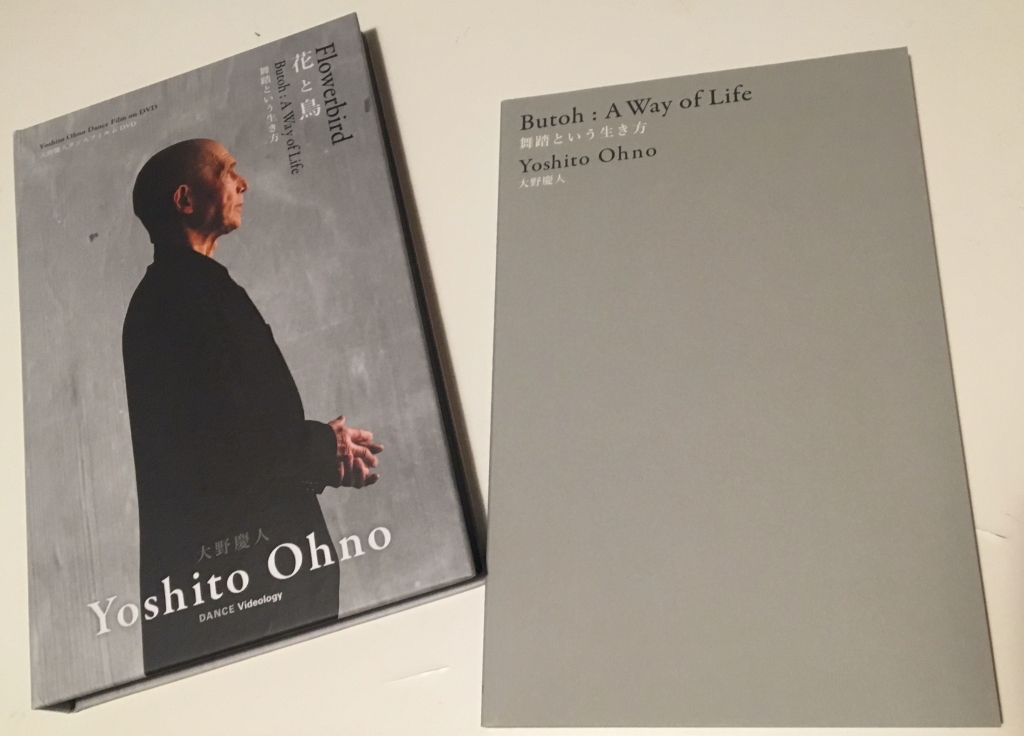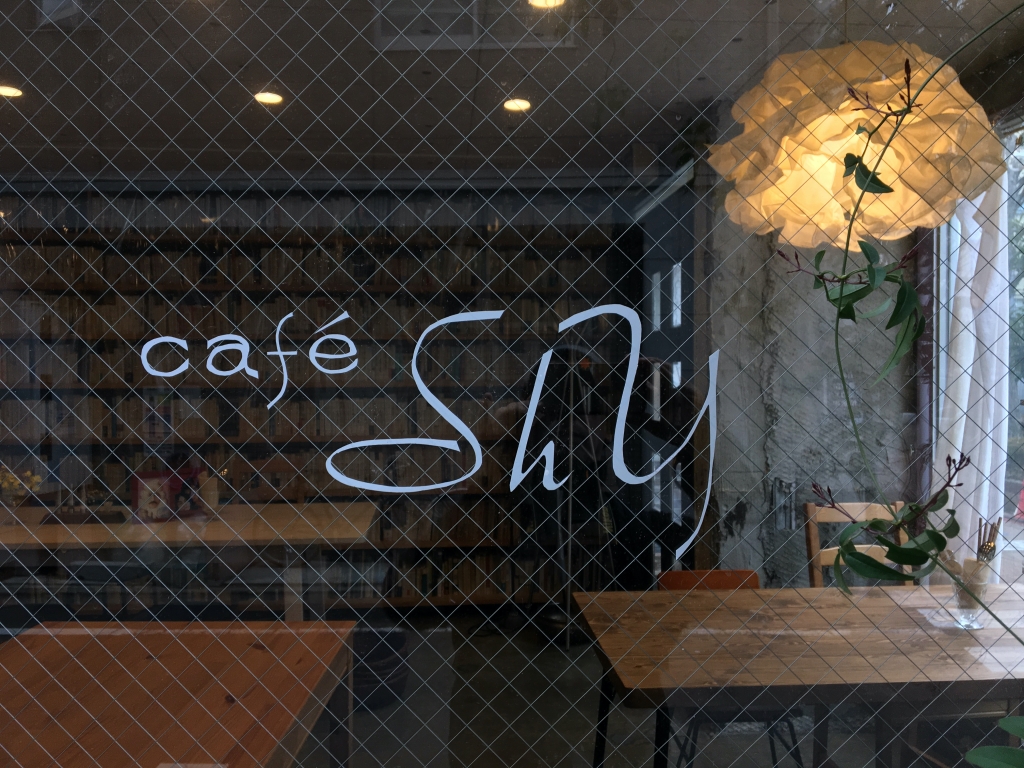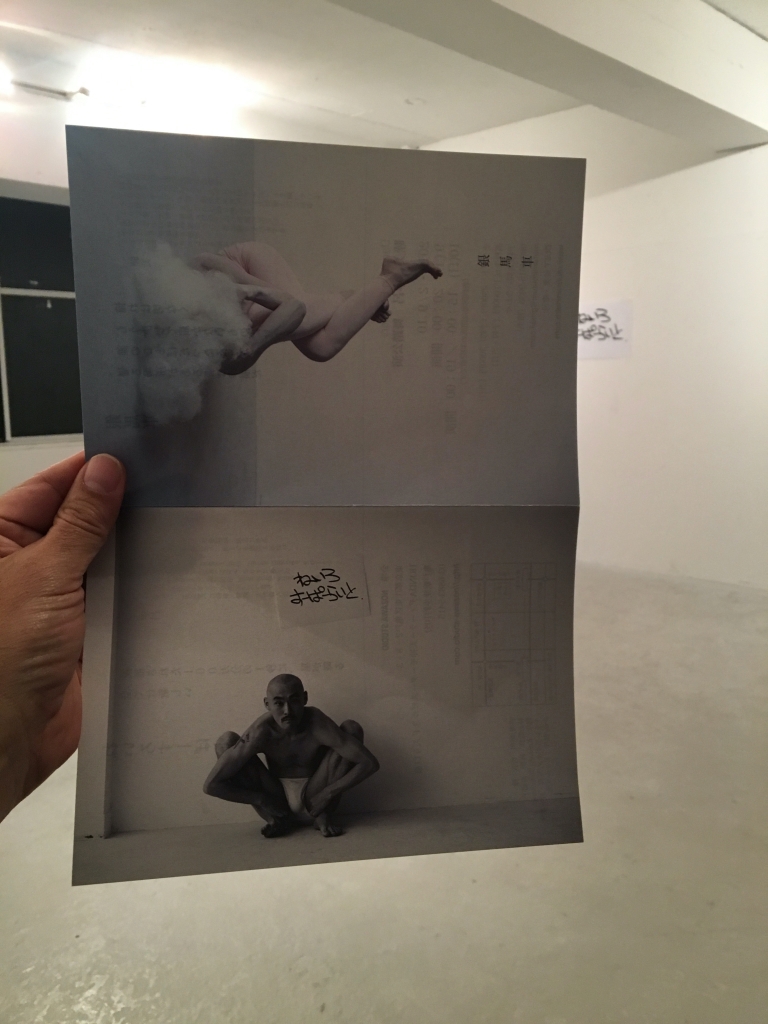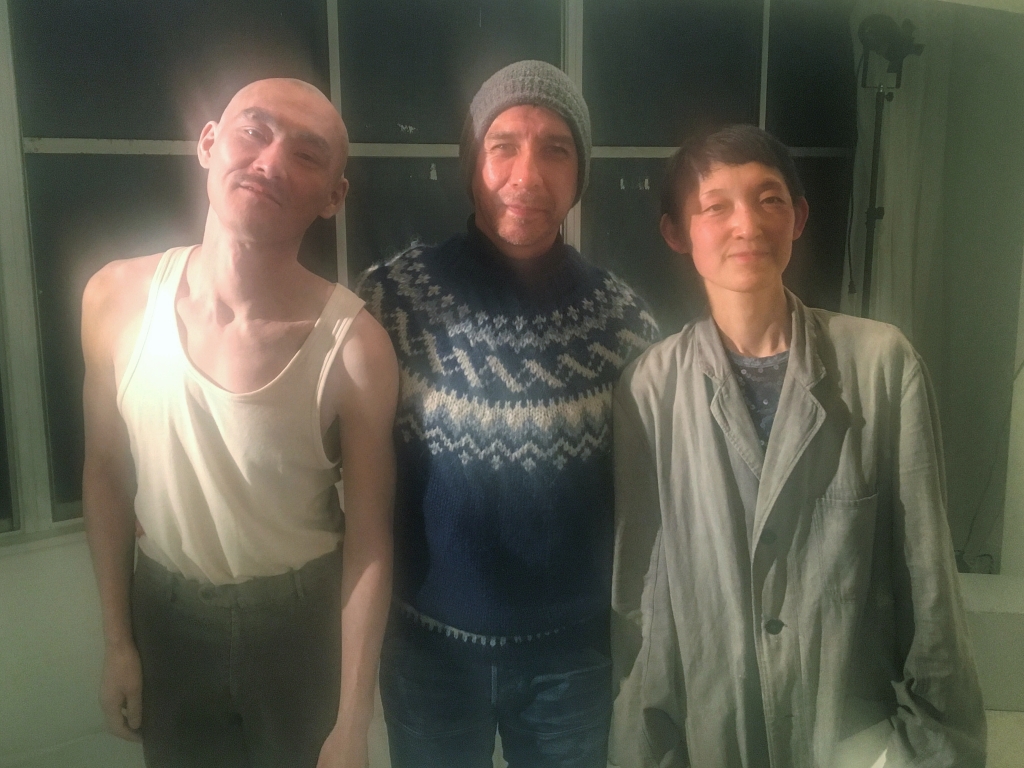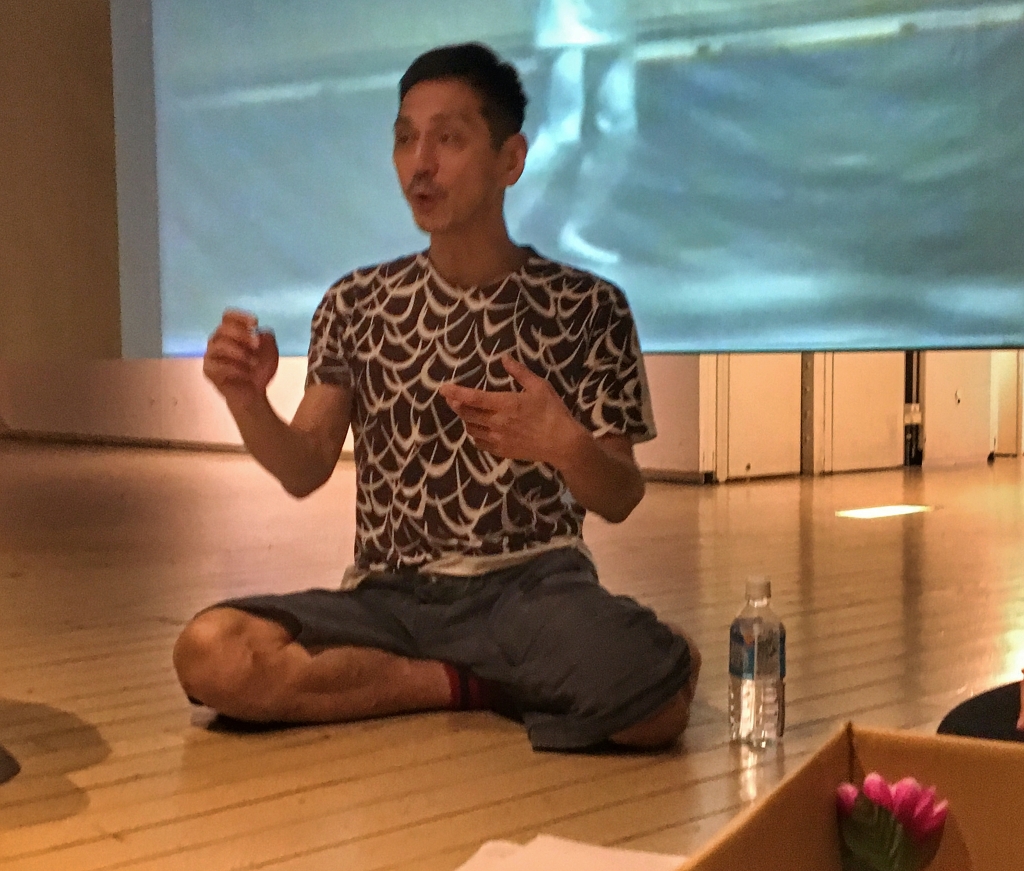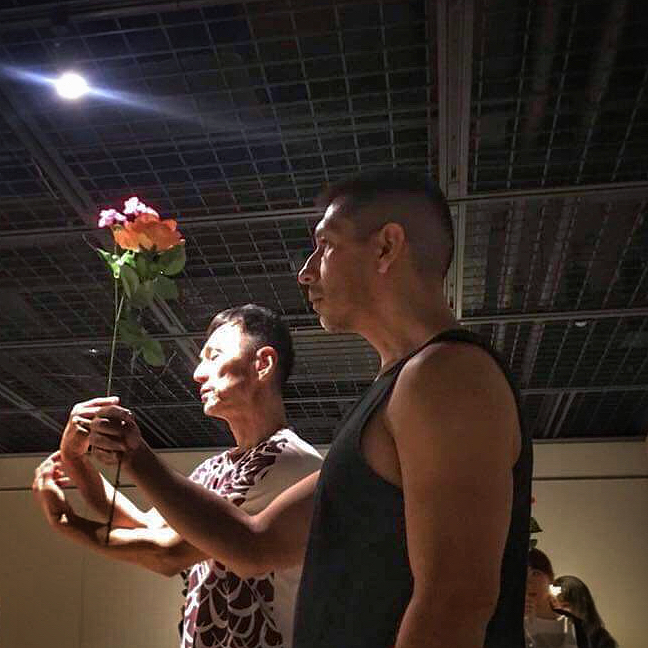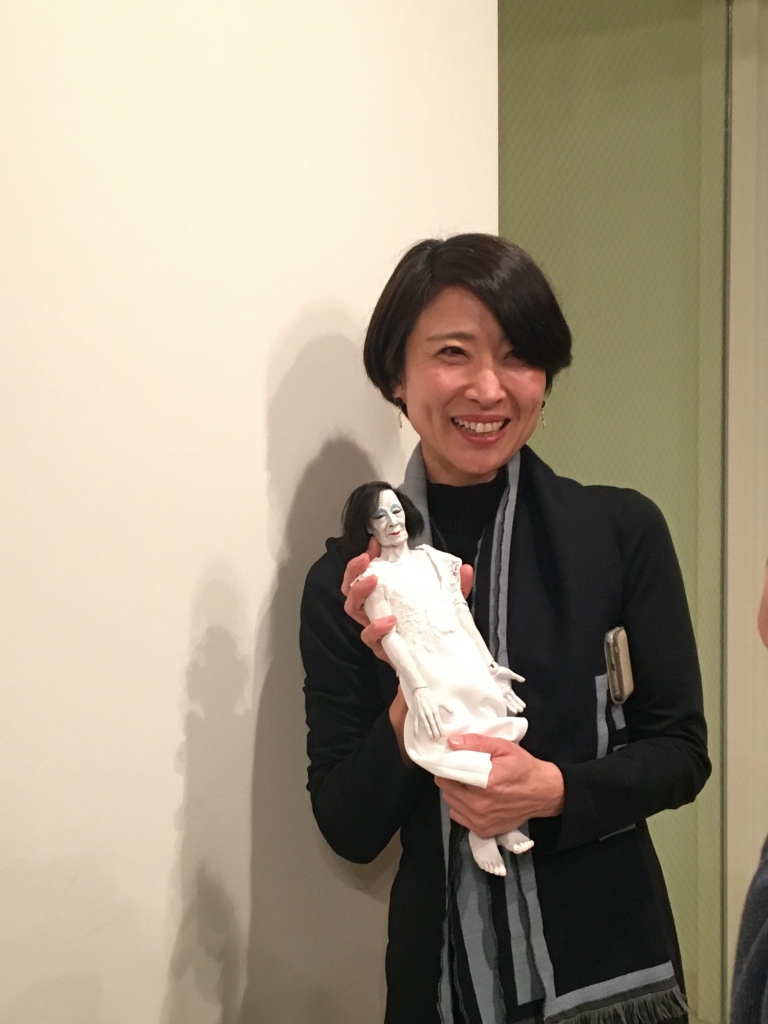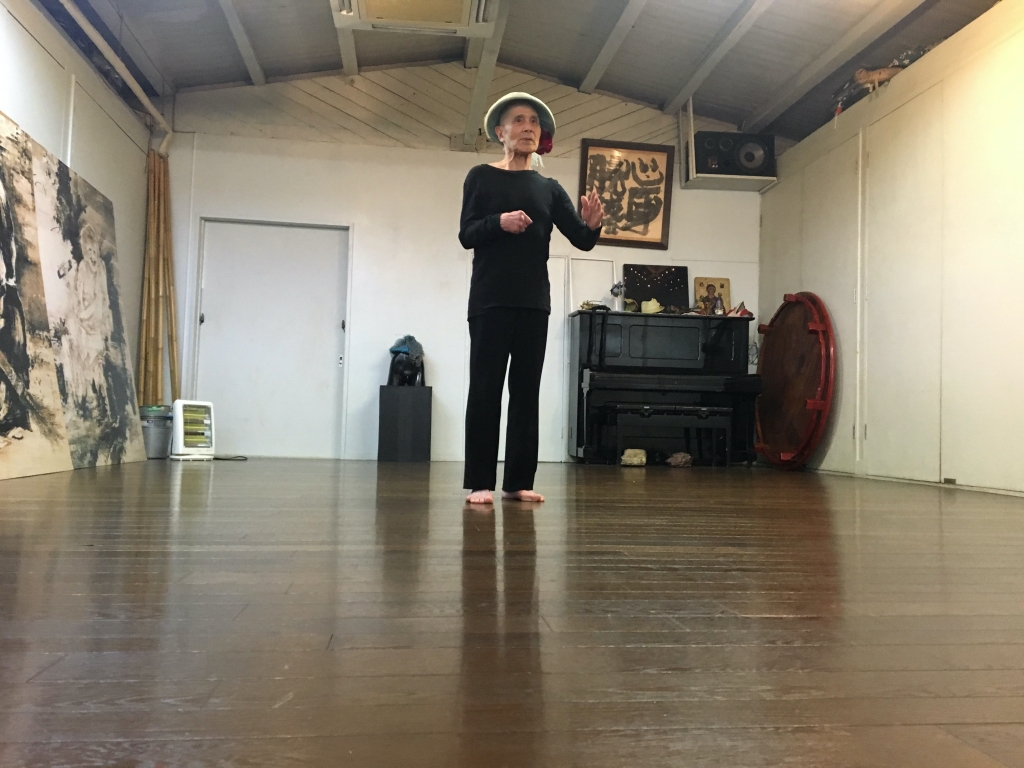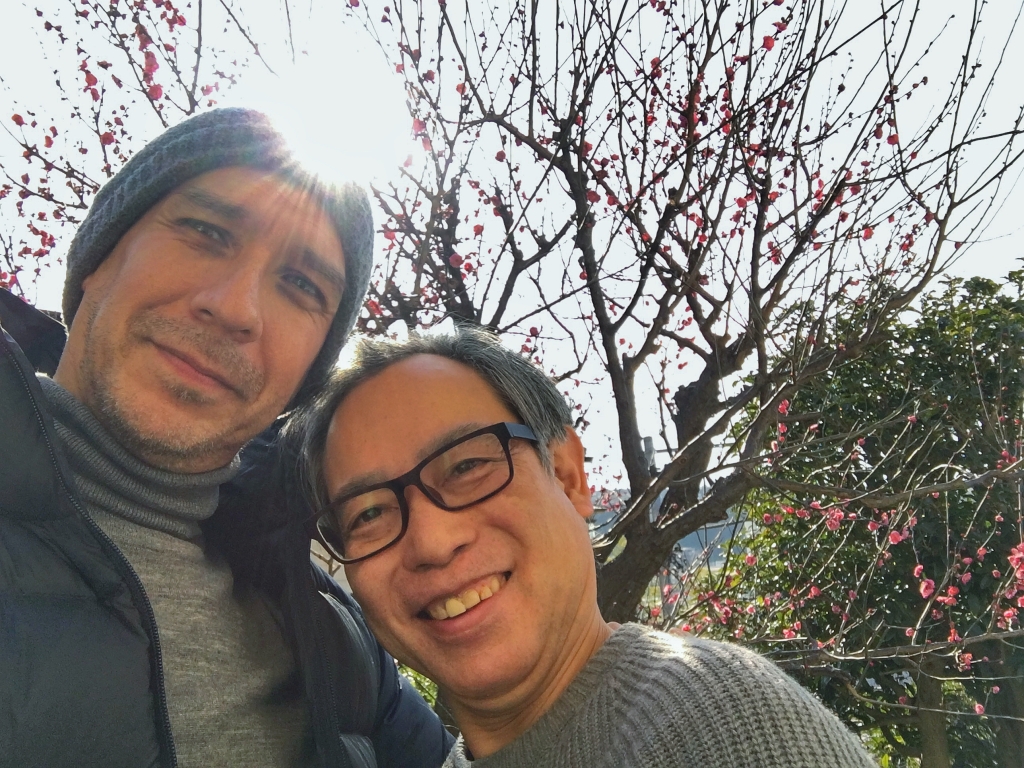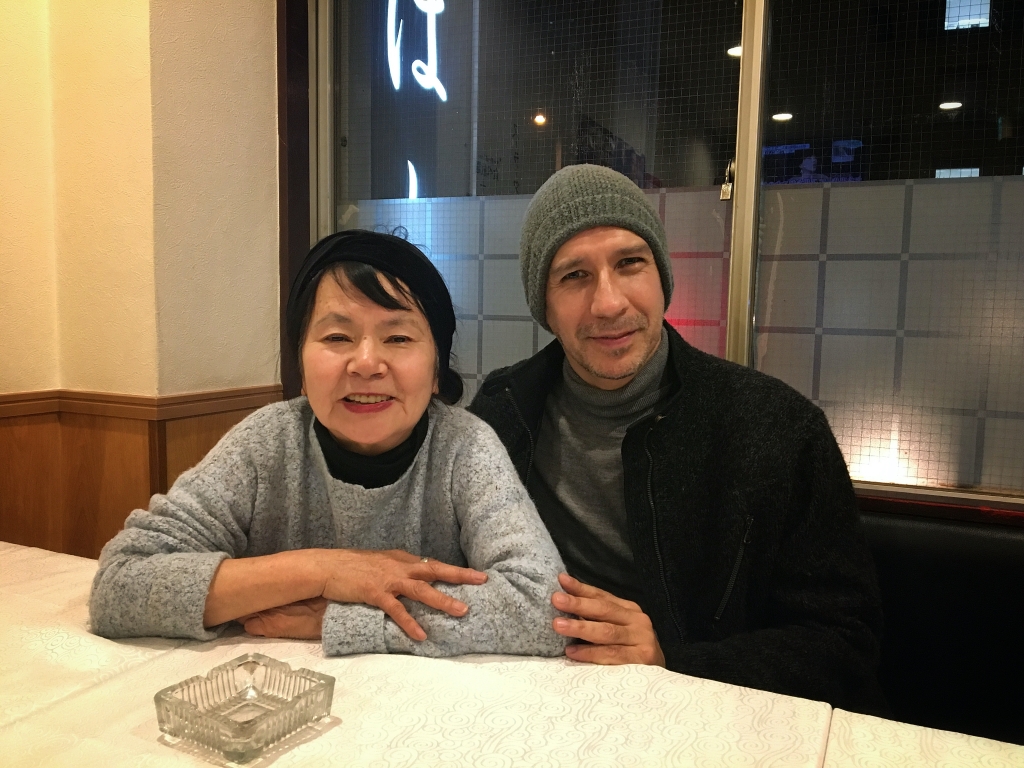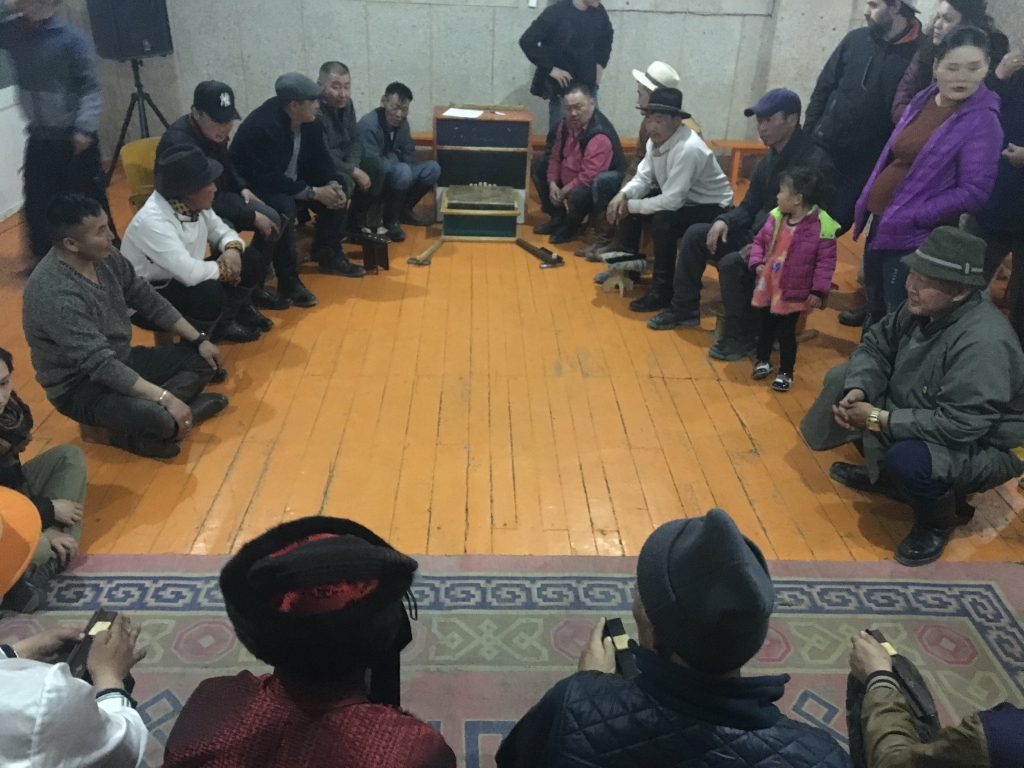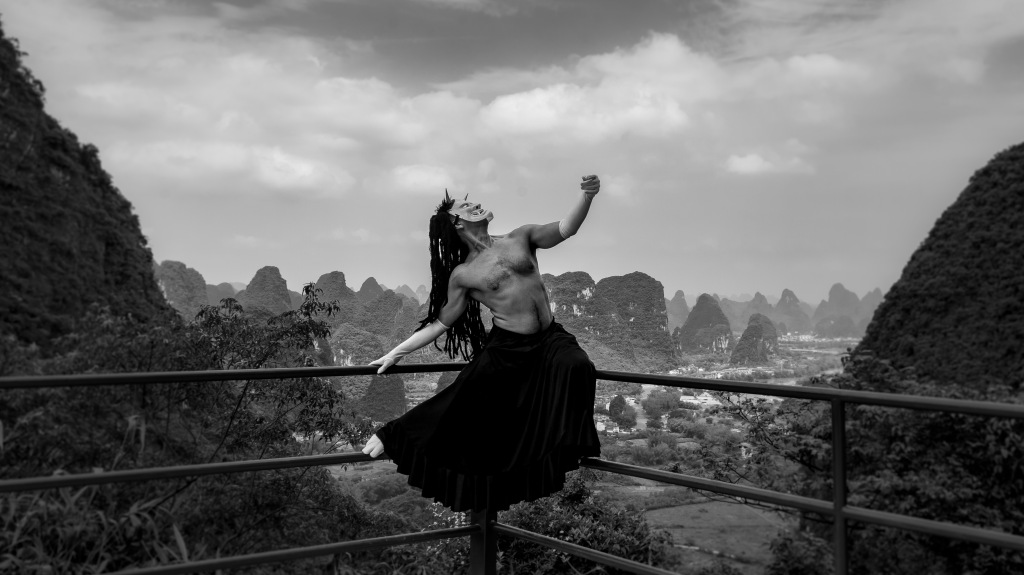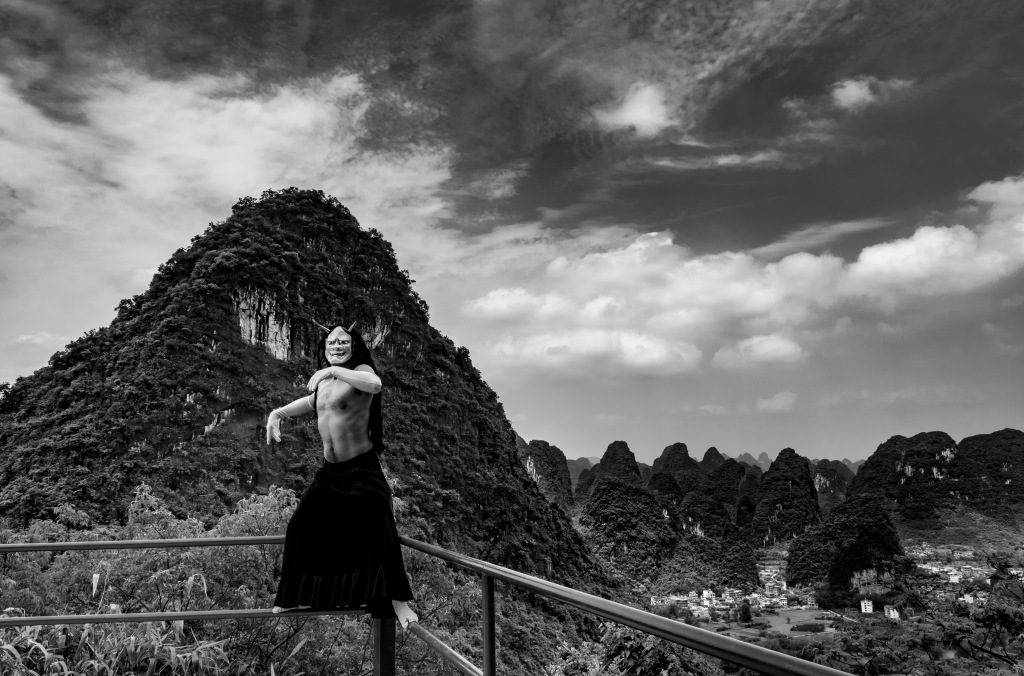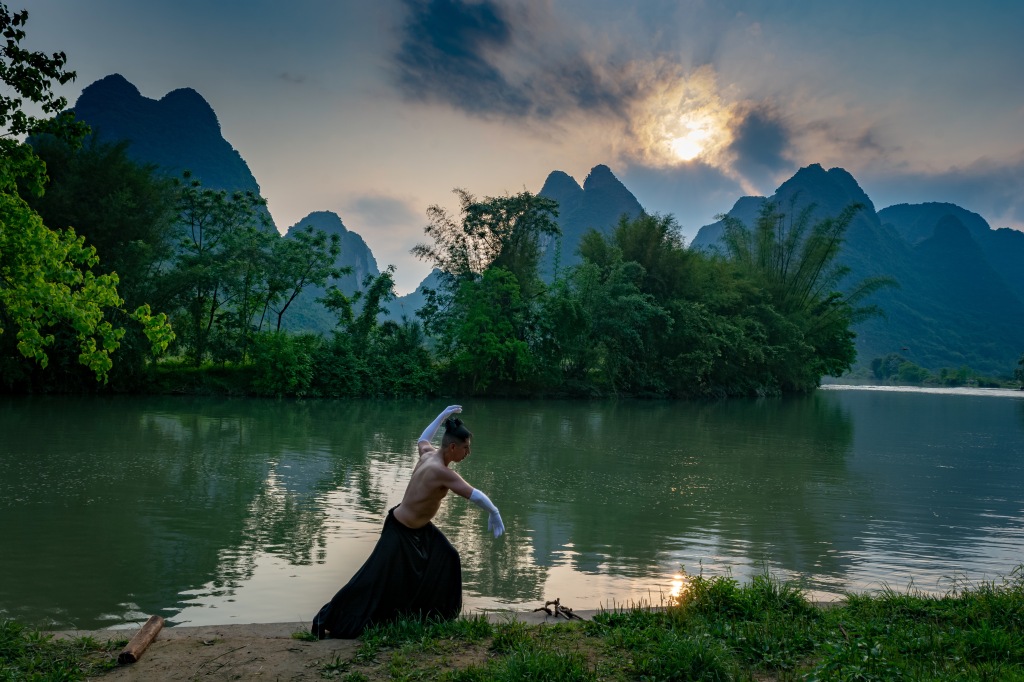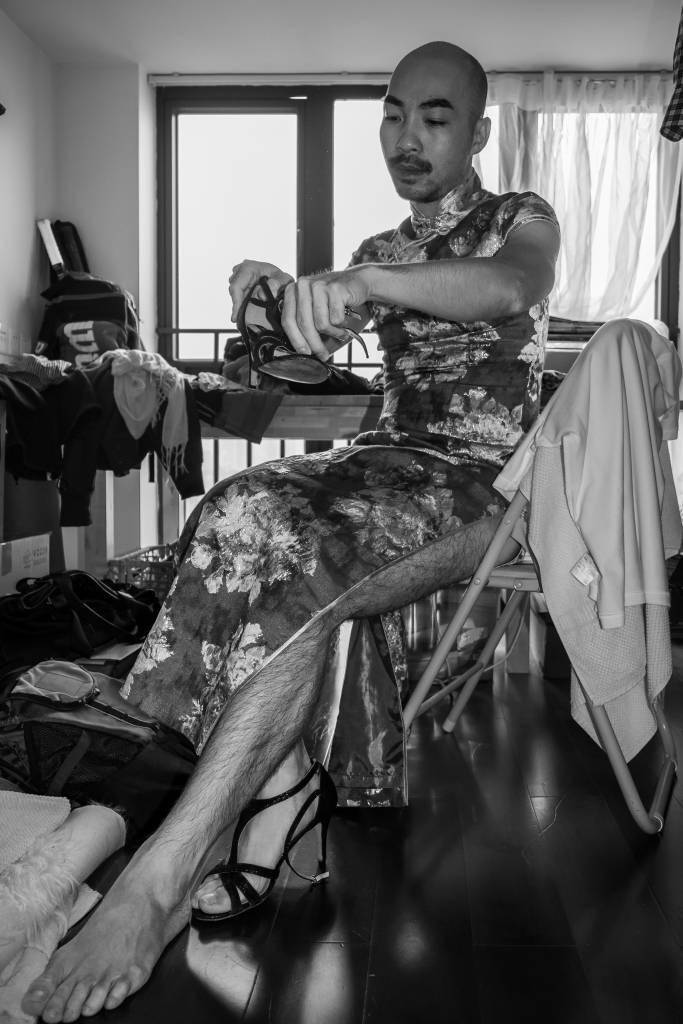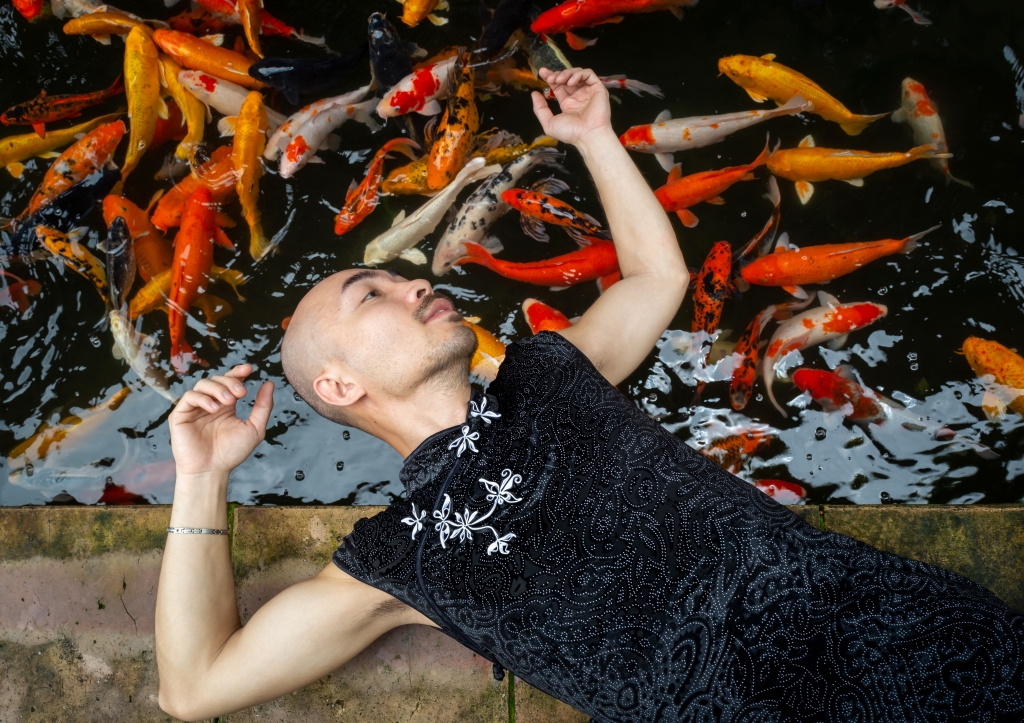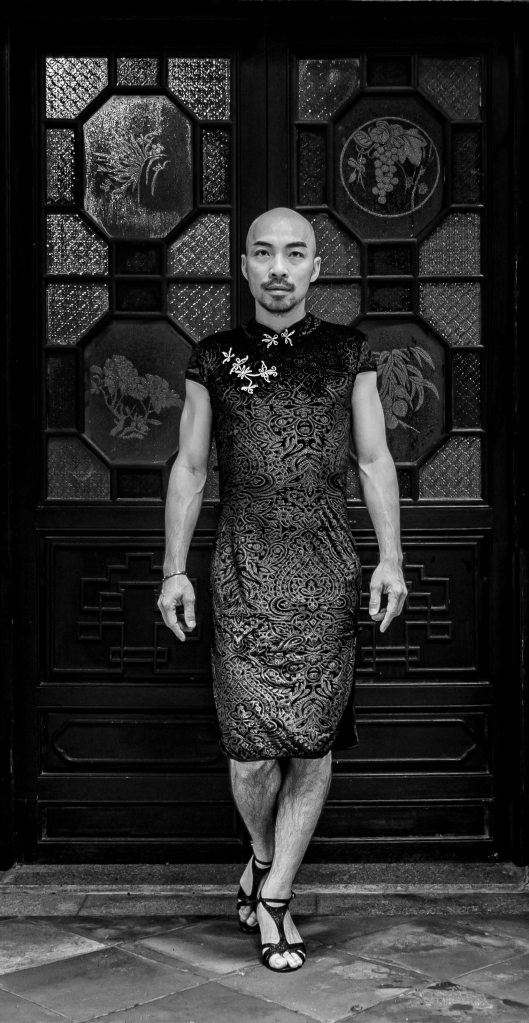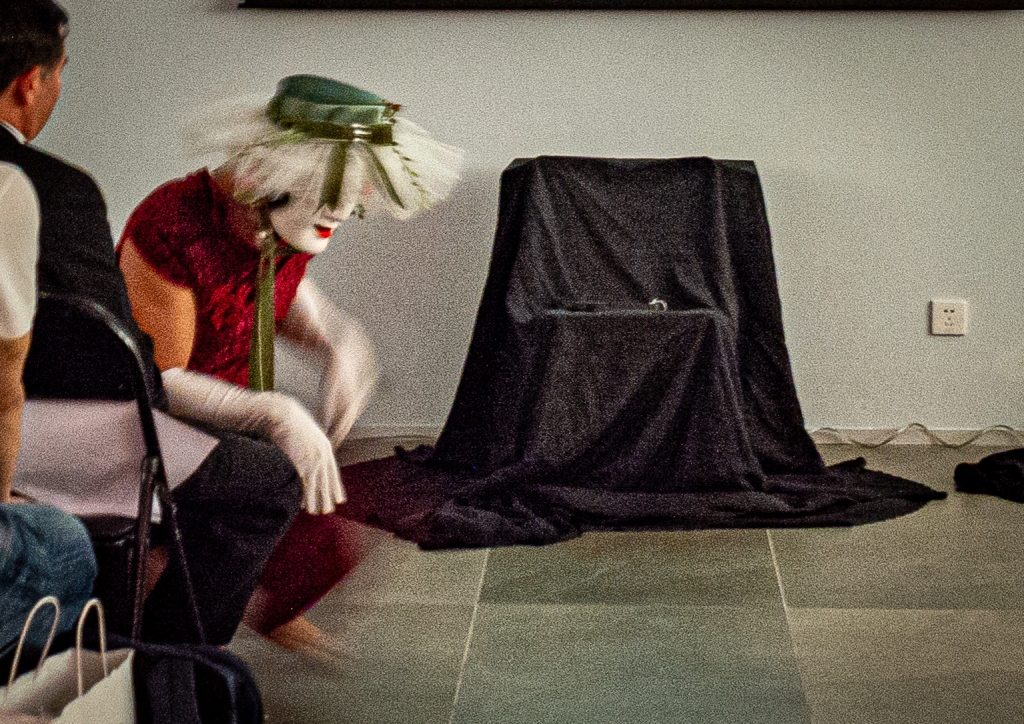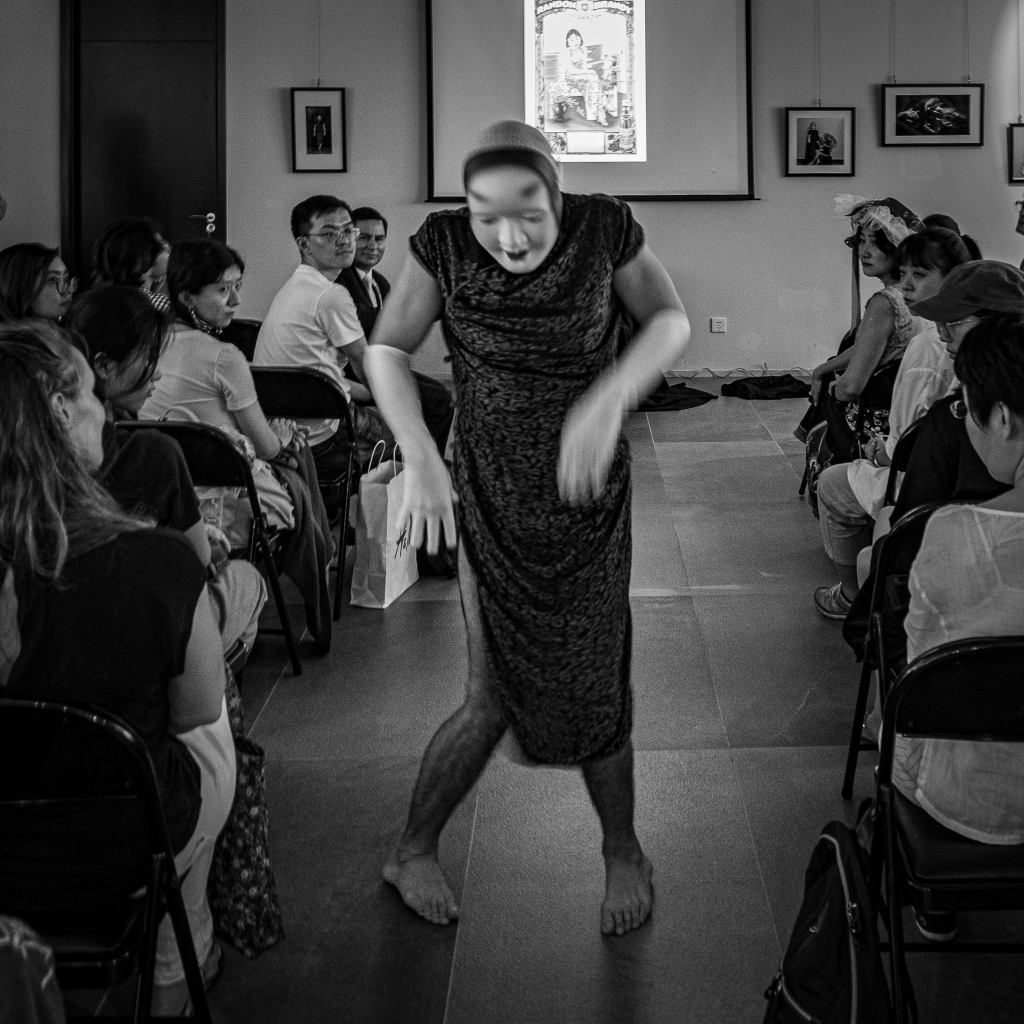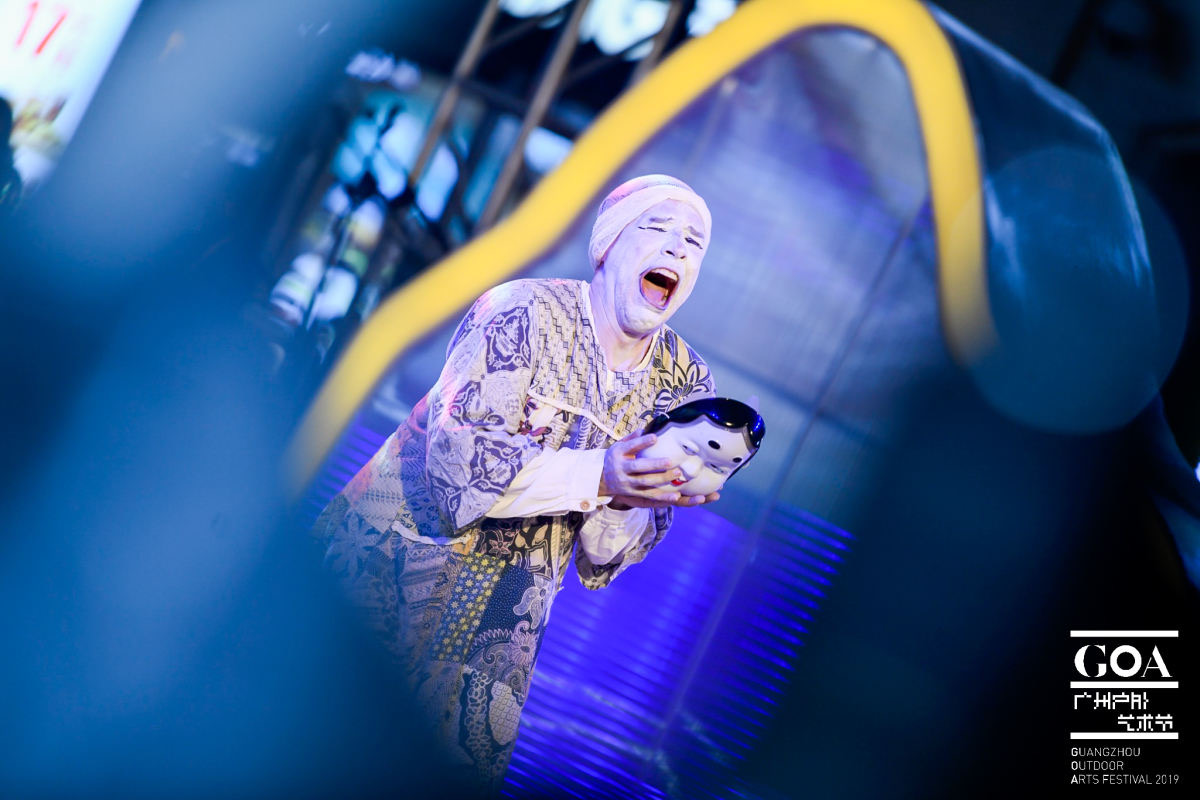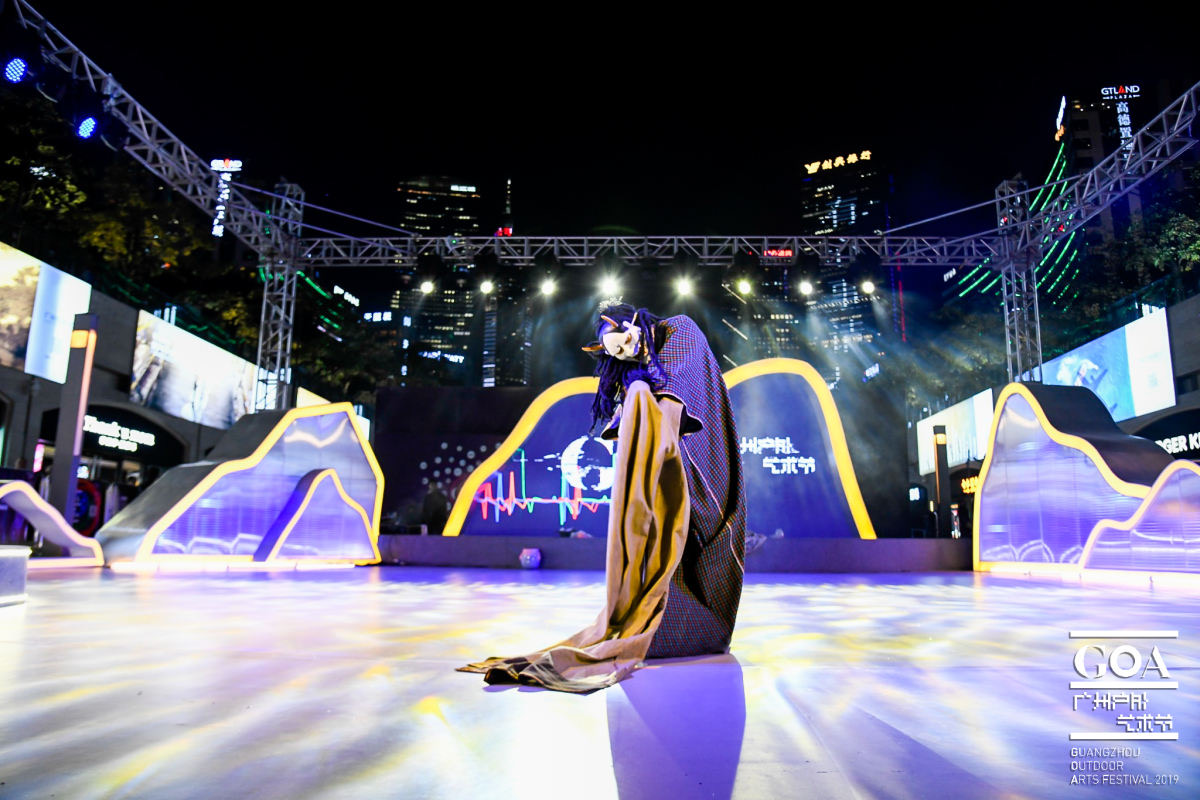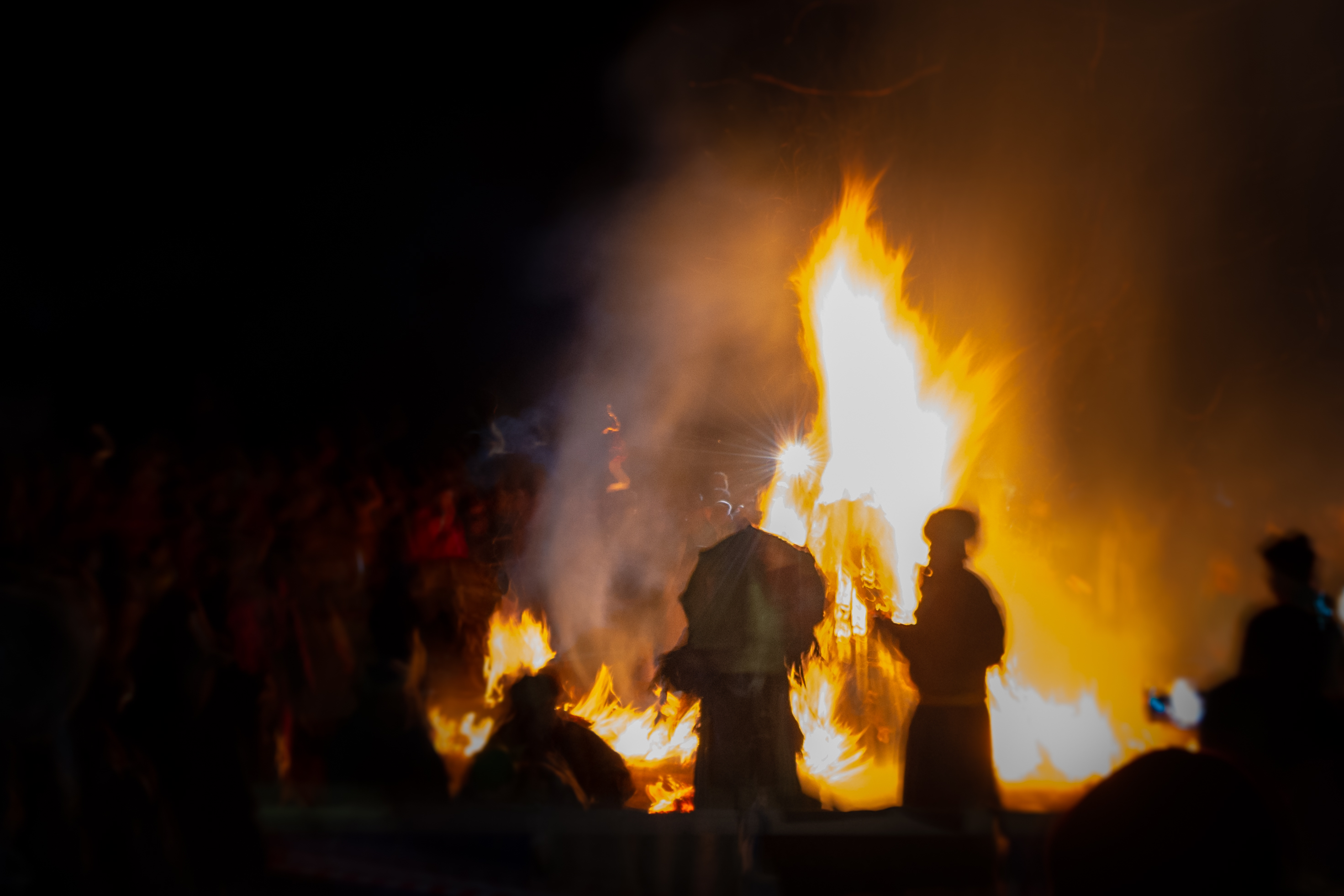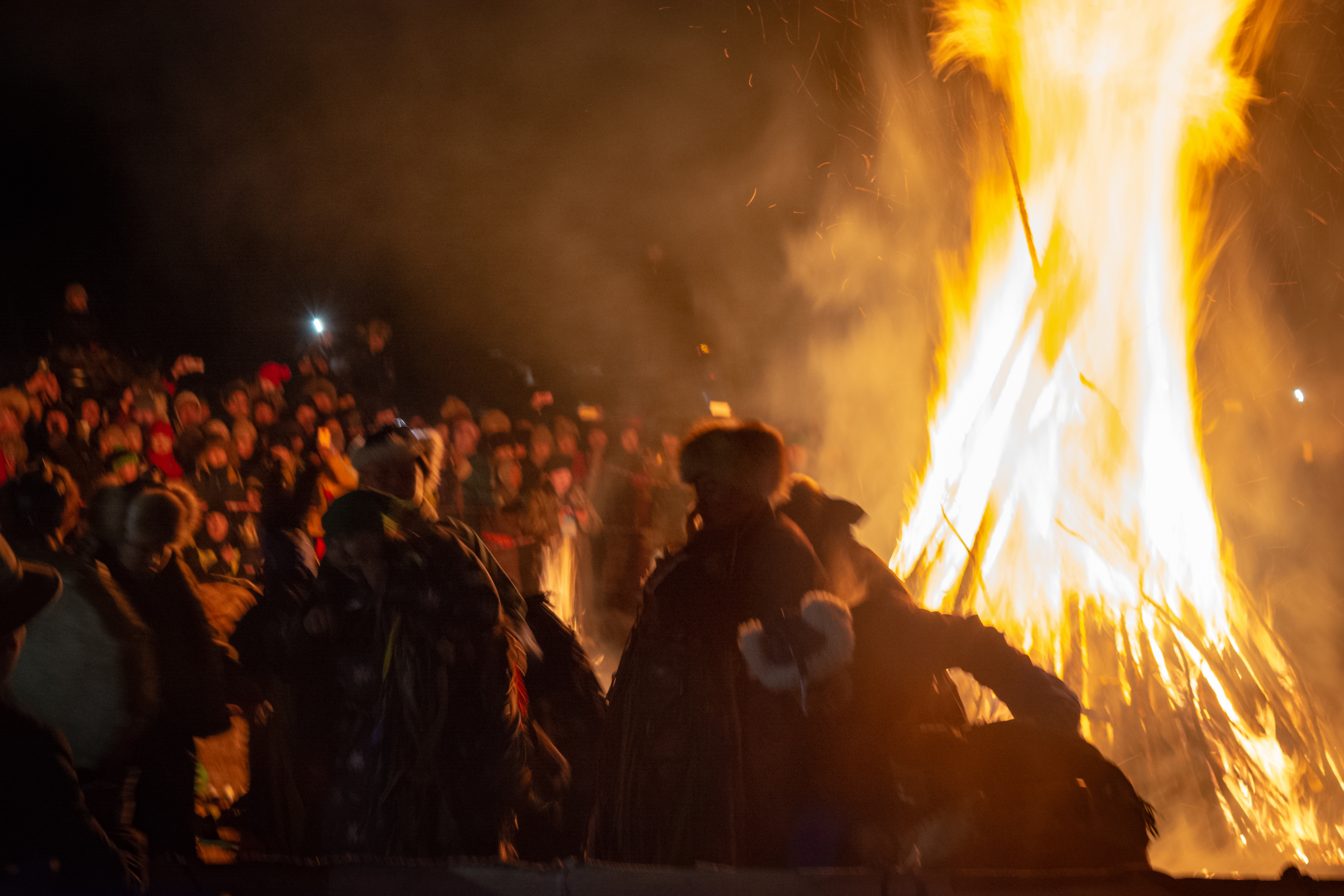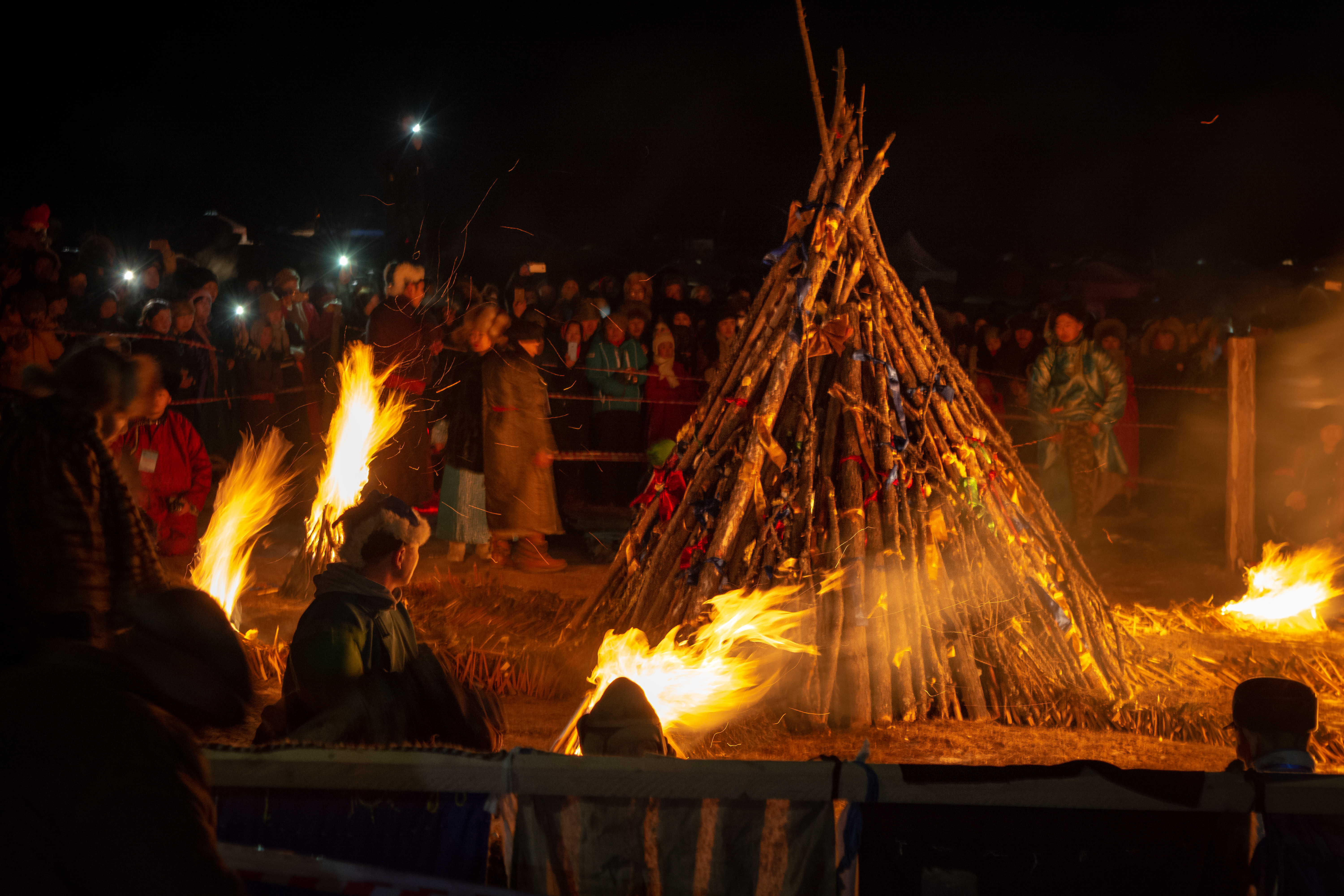I know – if you are not like me – it could be tiring to do this, but the action of making sense of the past throughout a continual revision is, for me, of the same importance as planning the future. So, I’m doing this.
After a 2018 full of attempts and a few successes (The Year I Left Behind), the year that’s just ended was full of creative work and presentations, full of achievements.
January
I received a photograph, taken in the nineties in Mexico City when I was working in “Escenología”, a performing arts research institute and publishing house directed by researcher Edgar Ceballos, where my dreams of being part of a theatre company that provided the group atmosphere and creativity inspired by Jerzy Grotowski’s and the Odin Teatret’s work were almost realized. What I did achieve during those years was a very powerful and deep technical and ethical education coming from many sources linked to Grotowski and The Odin Teatret (we worked with Eugenio Barba, Julia Varley and Roberta Carrieri, just to name a few), but especially our principal and main training coach, Jaime Soriano, himself a direct disciple and collaborator with Grotowski. The contact with the different researchers Edgar Ceballos was meeting and publishing (in books and magazines) gave me, of course, a performing arts culture I was dreaming to have. Watching these photos pushed me to address the problems of working in Guangzhou; this energy and impulse came directly from the source, no doubt about it.
These are two different photographs, both with the same spirit I was talking before: one, a general photo taken when Teatro Potlach came to Escenología to have a look at our work and give us some feedback; the second one, taken during the rehearsal of a piece we never premiered. Of course, the photos are cropped a bit so you can see me better.
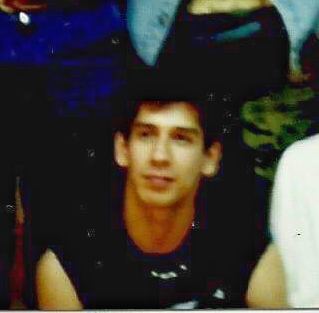

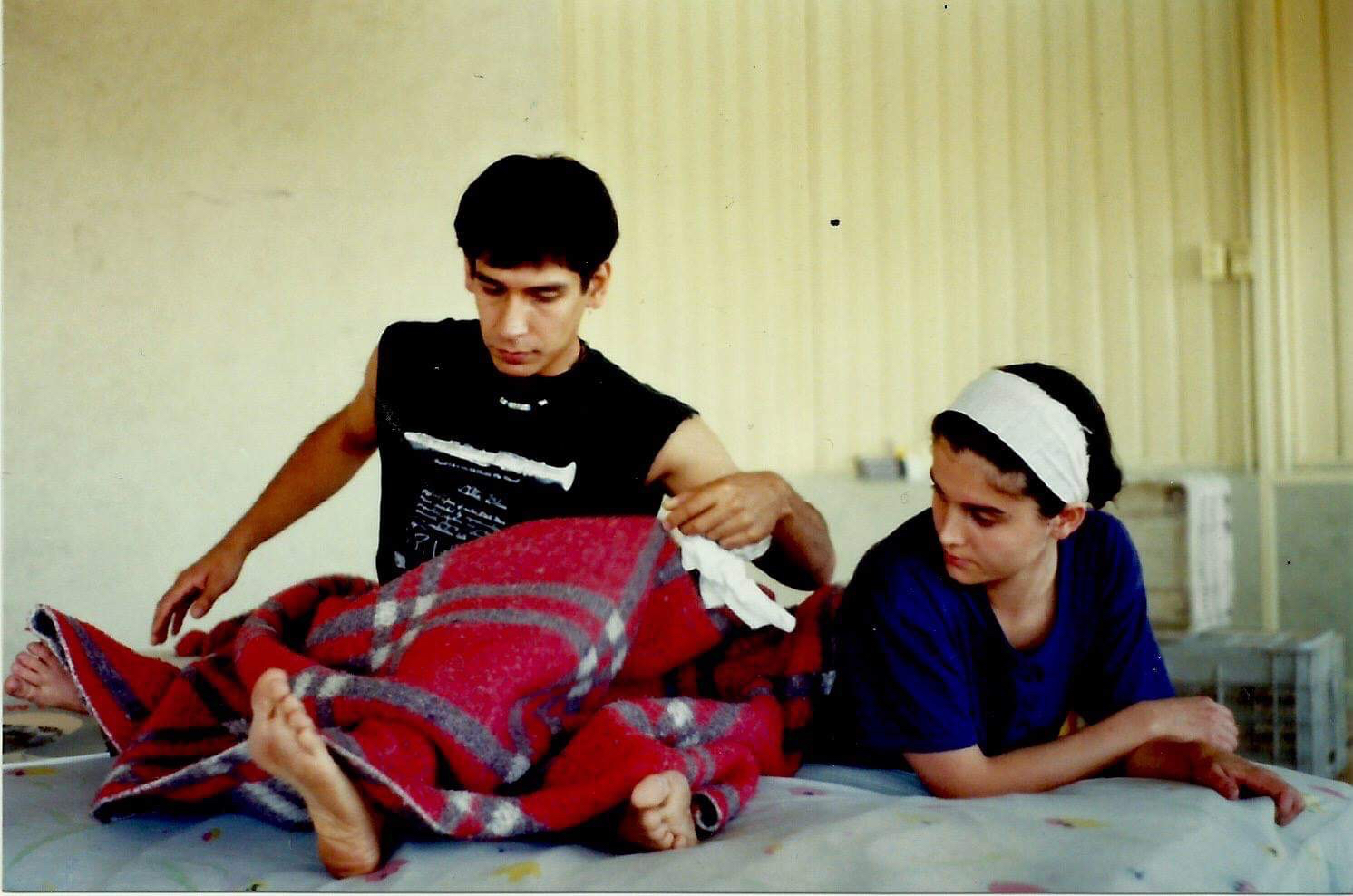
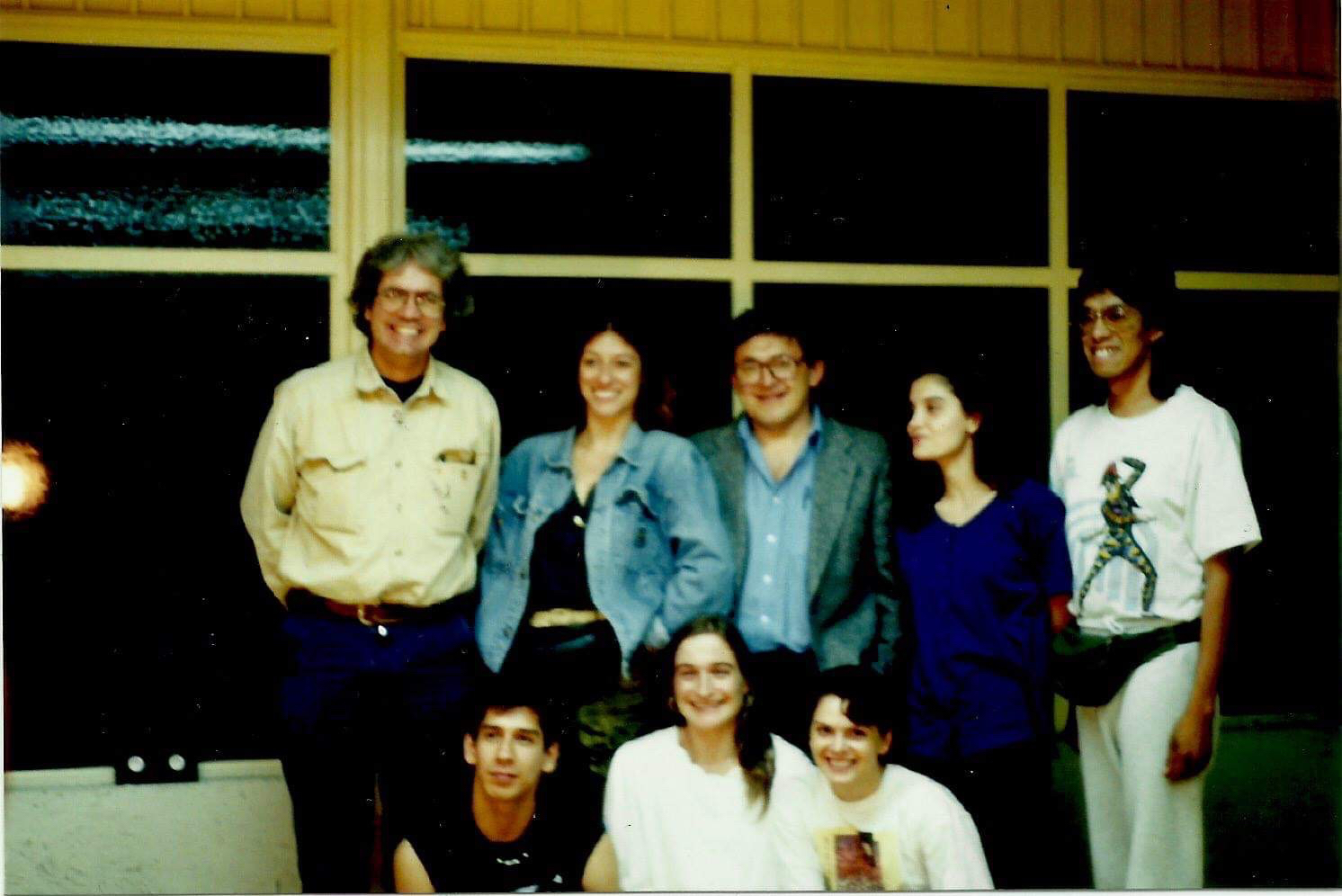
January/February/March
Japan again!
I was expecting this moment since 2014. I had saved enough money (Japan is super expensive) for the flight, accommodation, food and fees. I was close to Tokyo (Guangzhou is less than 4 hours away by plane). I really needed to see master Yoshito Ohno and dance with him again at the Kazuo Ohno Dance Studio. And I wanted to get in touch again with all the other masters that are working in Tokyo: the great Natsu Nakajima, Yuri and Seisaku (there I had the opportunity to meet and train with Yumiko Yushioka), and Kudo Taketeru. I had the chance to have a basic workshop with Takao Kawaguchi about his experience with “About Kazuo Ohno”, and a surprisingly interesting class with two colleagues from Yoshito’s workshops, Mutsumi and Neiro.
My goal was to have a total immersion in the current Japanese Butoh world, and you bet I did. I took lessons almost every day (sometimes two different classes in different parts of the city or between two cities in one day) from the end of January till the beginning of March. I went to see dozens of performances, listening to conferences and talks, homages, exhibitions, and I even paid two visits to the Hijikata Butoh Institute at Keiko University where researcher Takashi Morishita gave me all the facilities to feel in that place like in my own personal library. One day, on my way to the Hijikata Institute, I passed by an area of old bookshops, where I found a good edition of the book “Ba-ra-kei: Ordeal by Roses” by photographer Eiko Hosoe, with images of Yukio Mishima – both very important figures for Butoh in Japan.
My last day I interviewed Master Yoshito Ohno about his work life and his ideas of an uncertain future after his heart attack, which partially paralyzed his body.
At the moment I was writing this year’s revision I learned that – exactly one year after this visit to Japan – master Yoshito Ohno, the dancer who with Tatsumi Hijikata gave the first Butoh performance in history, son of the great Kazuo Ohno, has passed away. I am sad and I have a terrible feeling of being lost. I know that, little by little I will only feel thankful for all that I learned by listening to him and dancing with him. My thoughts and love are with his wife, his daughter Keiko and all the Ohno family, as well as with my colleagues, friends and people close to the Kazuo Ohno Dance Studio.
My life in Japan literally nourished on Butoh.
Of course, I cannot show here my whole experience in Japan, but these photographs will help me share part of it. Also, there are many other posts in this blog about my experiences during that trip:
- A Tree
- Unconscious Body
- Sensei The Master
- When The Master Dances With You
- A Horse’s Neck
- Uri Omoni -My Mother- (My Impressions)
- Takao Kawaguchi’s Body Sculpture Workshop
- The Person Becoming A Body (Kudo Taketeru Improvised Performance During A Concert Of Concrete Music)
- The Path Of Patience (Small Changes At Yoshito Ohno’s Butoh Workshop)
- Light, Darkness And The Inner Light (Seisaku’s Workshop)
- Nantokashite (Mutsumi and Neiro’s Butoh Workshop in Hirai)
March
March came with a surprise trip to Mongolia. I probably don’t have much to say about me and Butoh during this trip, but there was a lot about this culture I’ve always been interested in, especially its throat singing and the shamanism of the north of the country. Both (throat singing and shamanism) are very much the source of performing arts as a biological body in performance
The highlight of that trip was a shamanistic ritual on frozen Khövsgöl Lake. You can read about my whole experience in the post I dedicated to it. (link)
In Ulaanbaatar I went to listen to throat singing at a very tourist-oriented performance. Nevertheless, the technique was there and it was spectacular. I was also lucky that, during a camel festival in the south, in the village of Bulgam Sum, in the Gobi desert, I got to listen to some villagers singing some improvised traditional chants in an ankle bones match. You can listen to part of the chanting by following this link: https://soundcloud.com/gustavo-thomas-teatro/canto-y-juego-gobi-mongolia-2019
April
While I was preparing two Butoh pieces and one photography exhibition for June, I went to see one of China’s iconic natural marvels, staying at Jima village, near the city of Yangshuo in the the Guangxi Zhuang Autonomous Region. There I did two interesting improvisations with incredible natural settings as background. Sunsets those days were spectacular, so I timed one of those improvisations to happen as the sun set. I can say it was magical, because it really was.
May
In May I devoted myself to the creative process of the performances and the photo exhibition, and also added the task of transcribing the recorded interview I did to master Yoshito Ohno and then translating it to Spanish. While doing some research on Yoshito Ohno, I found some other interviews and materials of his autobiography that helped me understand the important role this man has played in the creation and promotion of Butoh since the very beginning. I started posting some of those findings as quotations and commentaries on my own personal experience of training at his side.
- ¿Por qué no orar mientras danzamos?
- “Lo que está en el centro de mis actuaciones está íntimamente vinculado a mi existencia diaria” (Yoshito Ohno)
June
The Mexican Consulate made good on its promise and offered me its events hall once more to show the second phase of my photo-performance project “Pride, Chinese Style”, which this time I called “Qipao, A Gender Game”. Like the year before, my collaboration took place during the LGTBQ Film Festival different consulates in Guangzhou organize. My performance and the photography exhibition were in fact the opening to one of the film screenings. This second phase gave me the opportunity to work again with Wing (Ho Hoiwing, en mandarín He Hairong, 河海荣), this time as male model wearing a qipao, stepping up from documentary photography to a stage concept: what’s the fuzz when a man wears a women’s iconic dress? The results were pretty good, I think, and the reaction of the people who attended was fantastic.
The photo-gallery shows first the photographs I showed at the exhibition, and then the photos of the performance at the consulate.
July
As you probably already know, LGTBQ public activities are prohibited in China. That’s why it was only possible to show my project “Pride Chinese Style” inside of a foreign consulate in Guangzhou. I was advised that it was possible to present my exhibition and performance outside the consulates if I announce it as a private event without an open public publicity or ticket sale. So, I did it. This second presentation of Qipao, A Gender Game was at Jueyuan 1985, a beautiful 1920s brick house in the historical neighborhood of Dongshankou. The performance was a little different from the first show at the Mexican Consulate, Wing and Atta (my model and the one of the dancer directors of the Tango house) participated mixing their Tango with my Butoh. I was lucky that a good photographer was there to take these beautiful documents of that night.




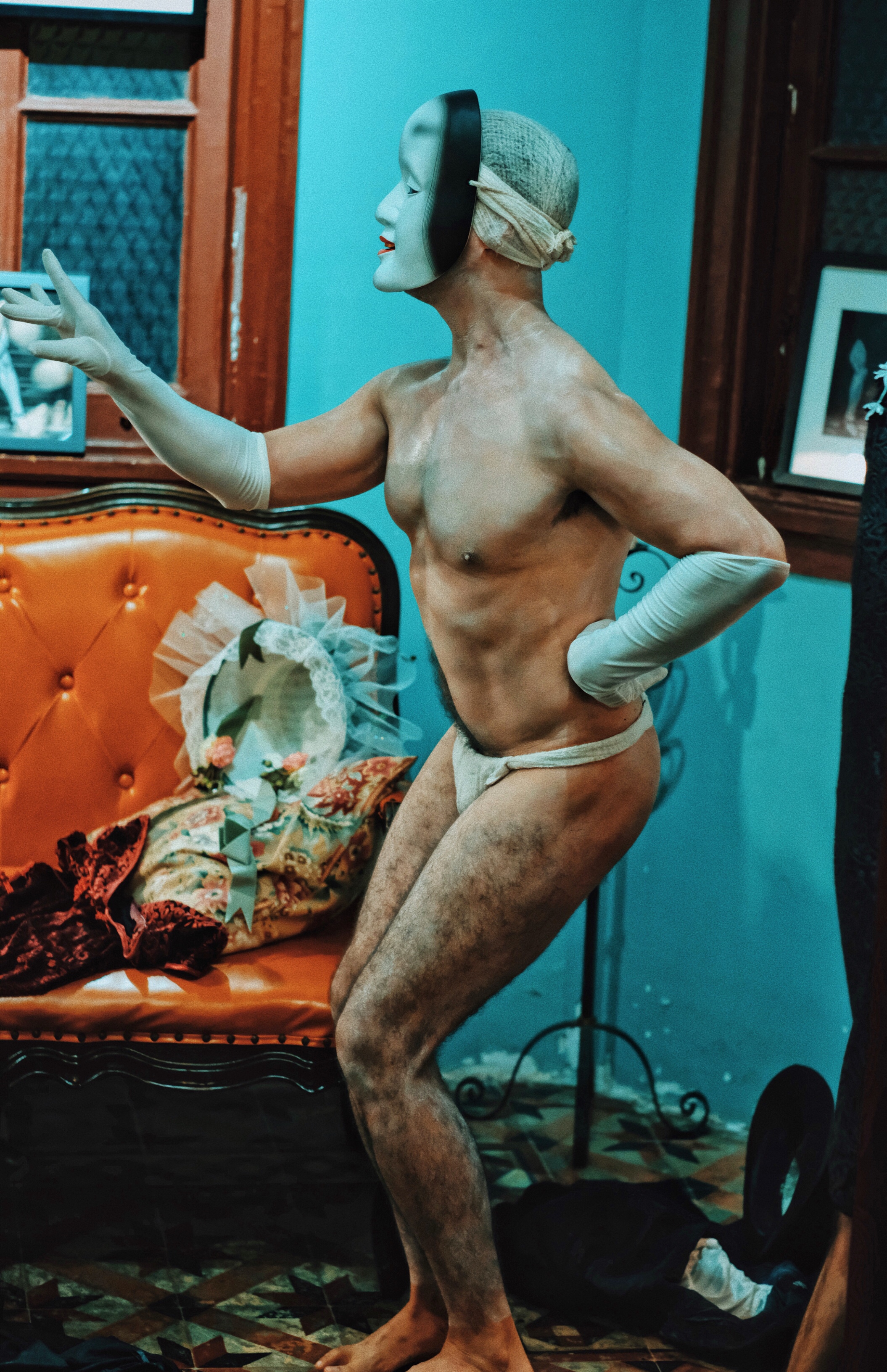

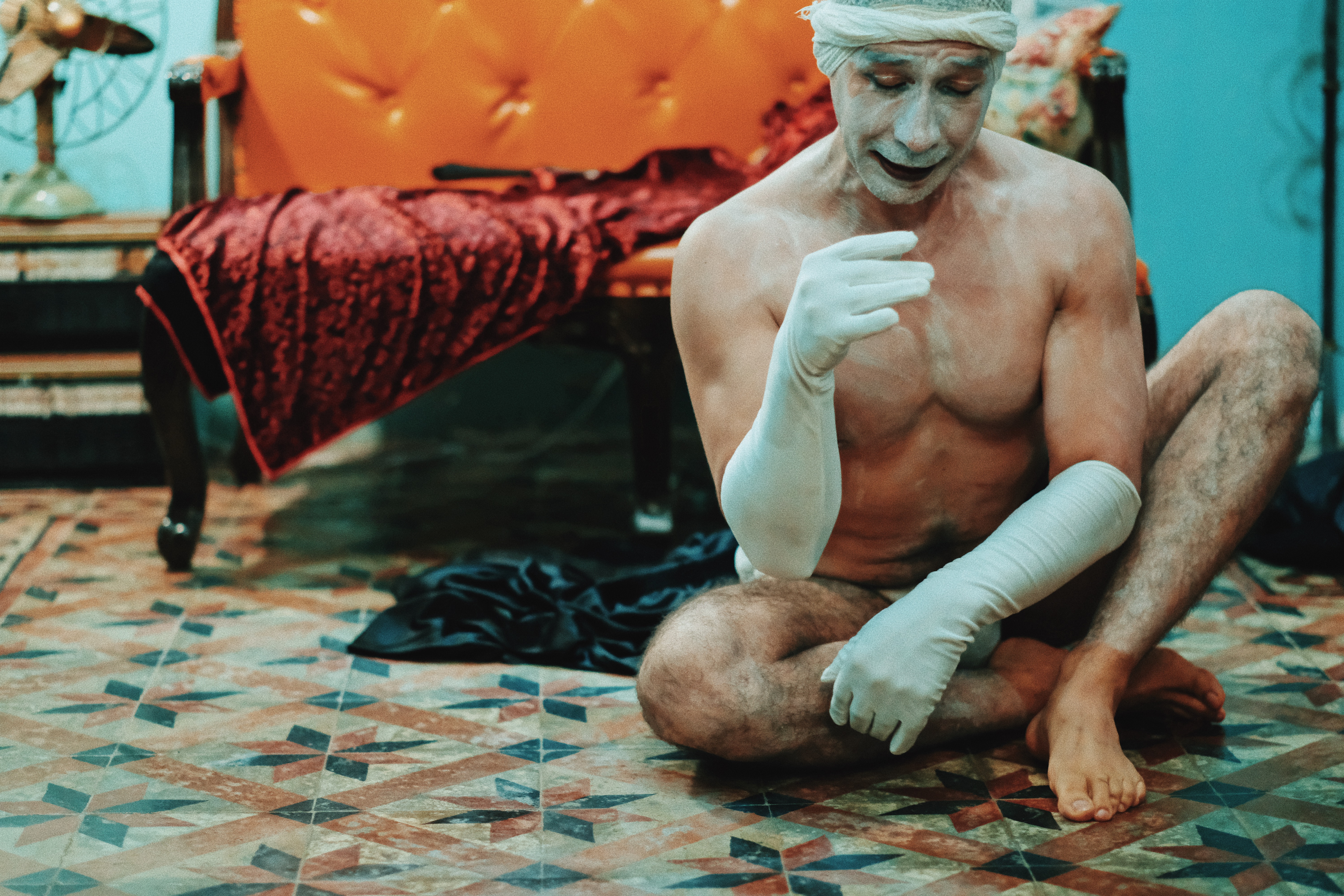










August
Invited by Jasmine, an enthusiastic Chinese woman who owns a few independent venues in Guangzhou, to do a performance at her Café Theatre “Zhile” (知乐), I started my new project (at that moment, I was envisioning one called “Study of the Properties of Water”). I worked on my own and also had some meetings with Michael Garza, a friend and United States bassoonist who plays for the Guangzhou Symphonic Orchestra. I had to put a brief pause on that work to make a trip to the Xinjiang Uighur Autonomous Region, to an area close to the borders with Pakistan, Tajikistan and Kyrgyzstan, and home to one of the most culturally vigorous – yet politically conflicted – Muslim minorities in China, the Uyghurs. The region is known also for its amazing natural beauties. On my way from Tashkorgan to Kashgar, near the lake Bulungkul, I did a short improvised performance with a background of amazing icy blue waters and enormous white sand dunes and snow-capped mountains.

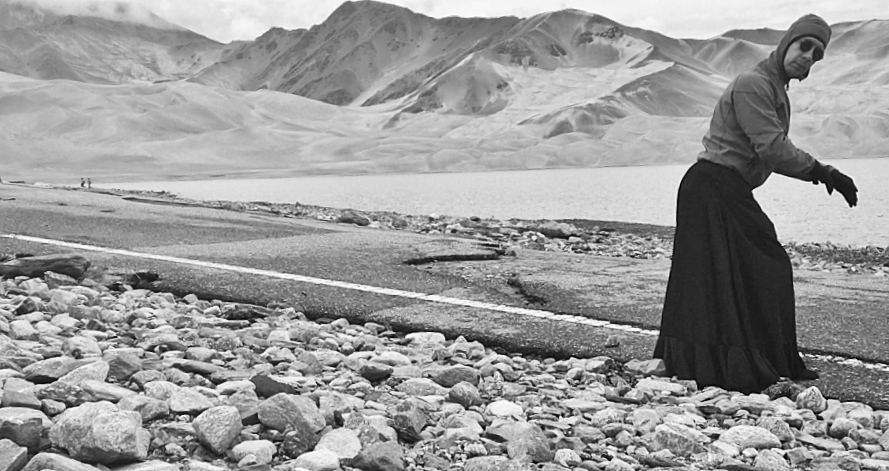






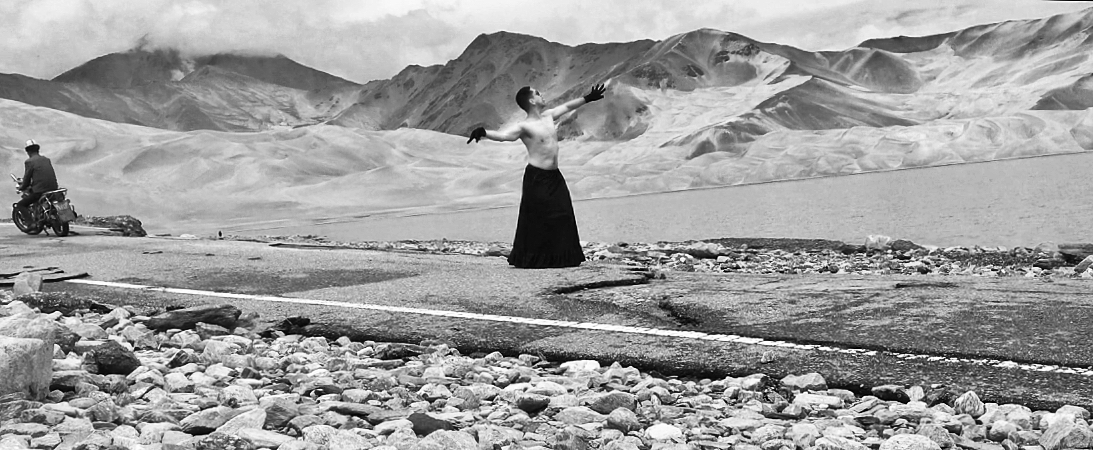
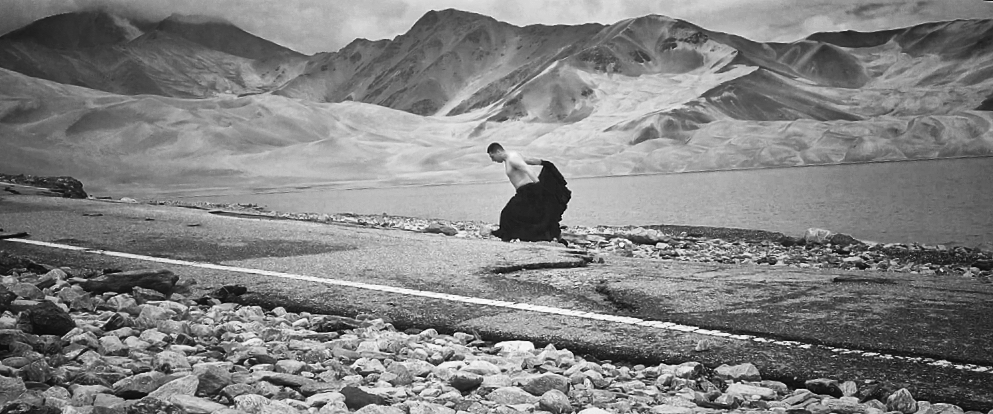


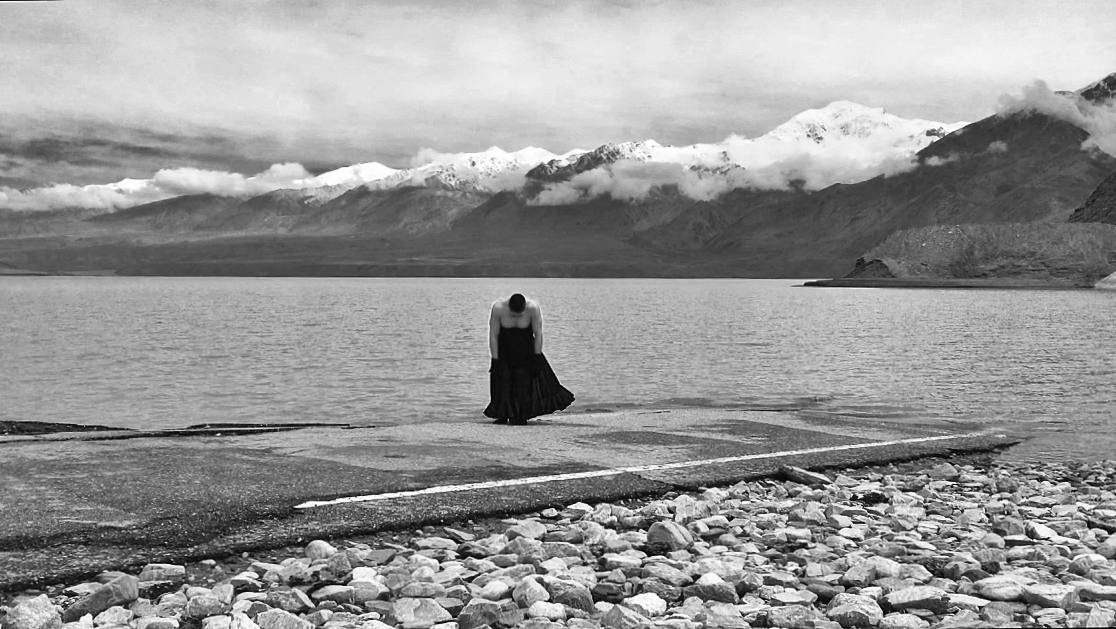

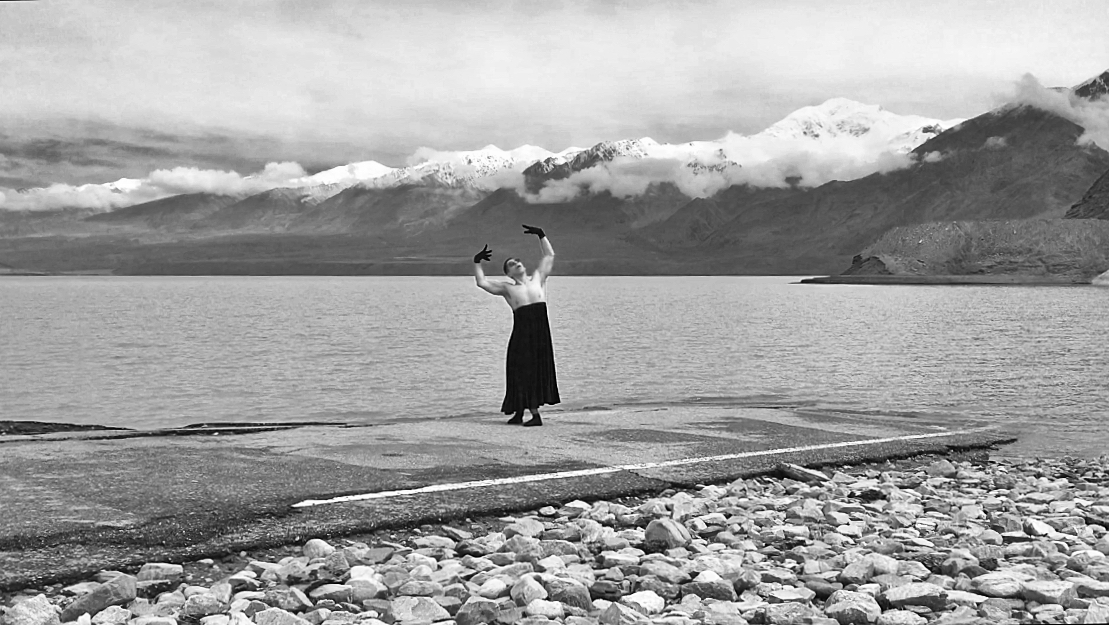

August/September
Michael Garza and me decided to apply ourselves to the creative process during all of September and up to our presentation, after the National Day holidays. I decided to fuse together two projects, “Study of the Properties of Water” and “The Passing of Time”, and this was the long final name of the work. Michael worked on 10 very powerful pieces for bassoon, some classics, some by contemporary Asian composers, while I worked on my inner story with inspiration coming from paintings of different states of water by Chinese Sung dynasty painter Ma Yuan and the idea/impulse of time passing inside my body.
Here you have some documents about that intense creative process.

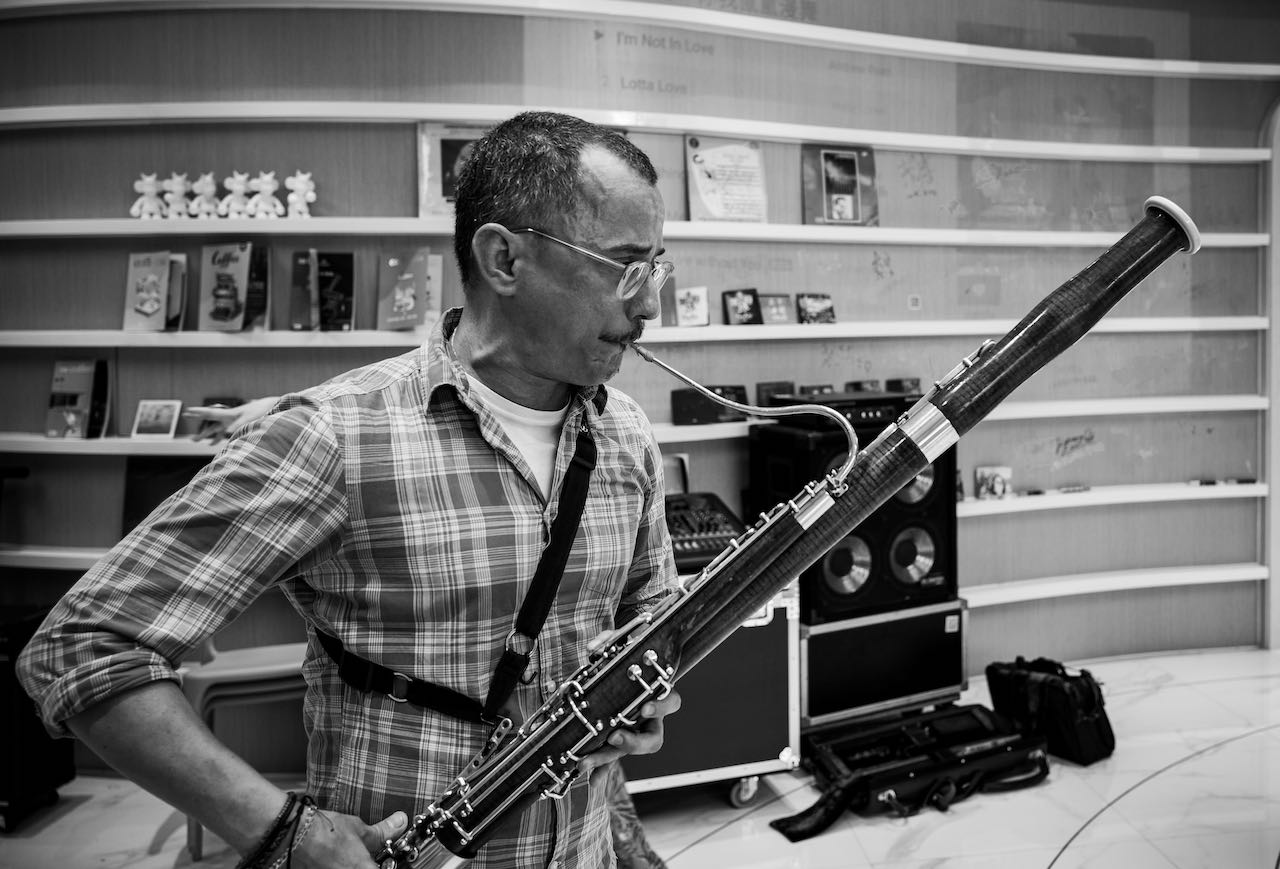






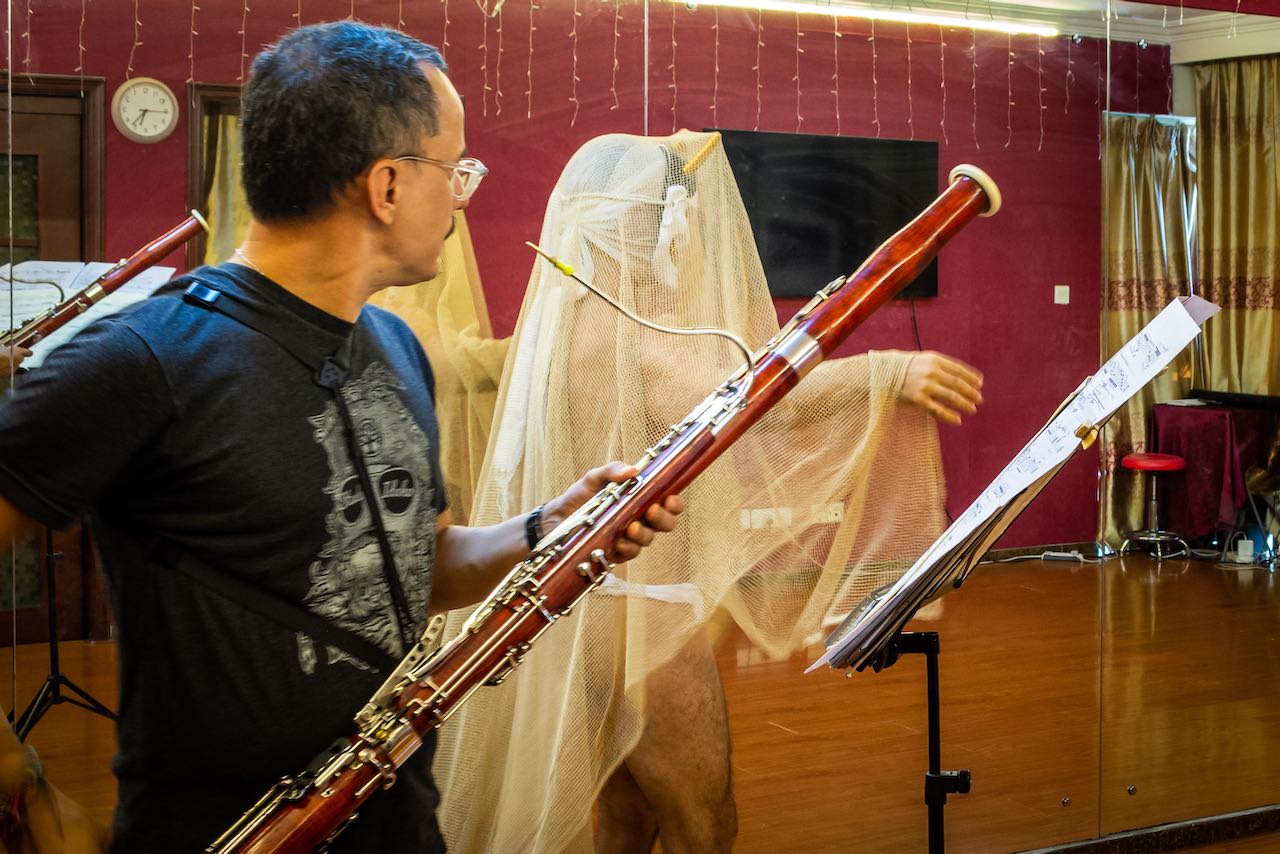


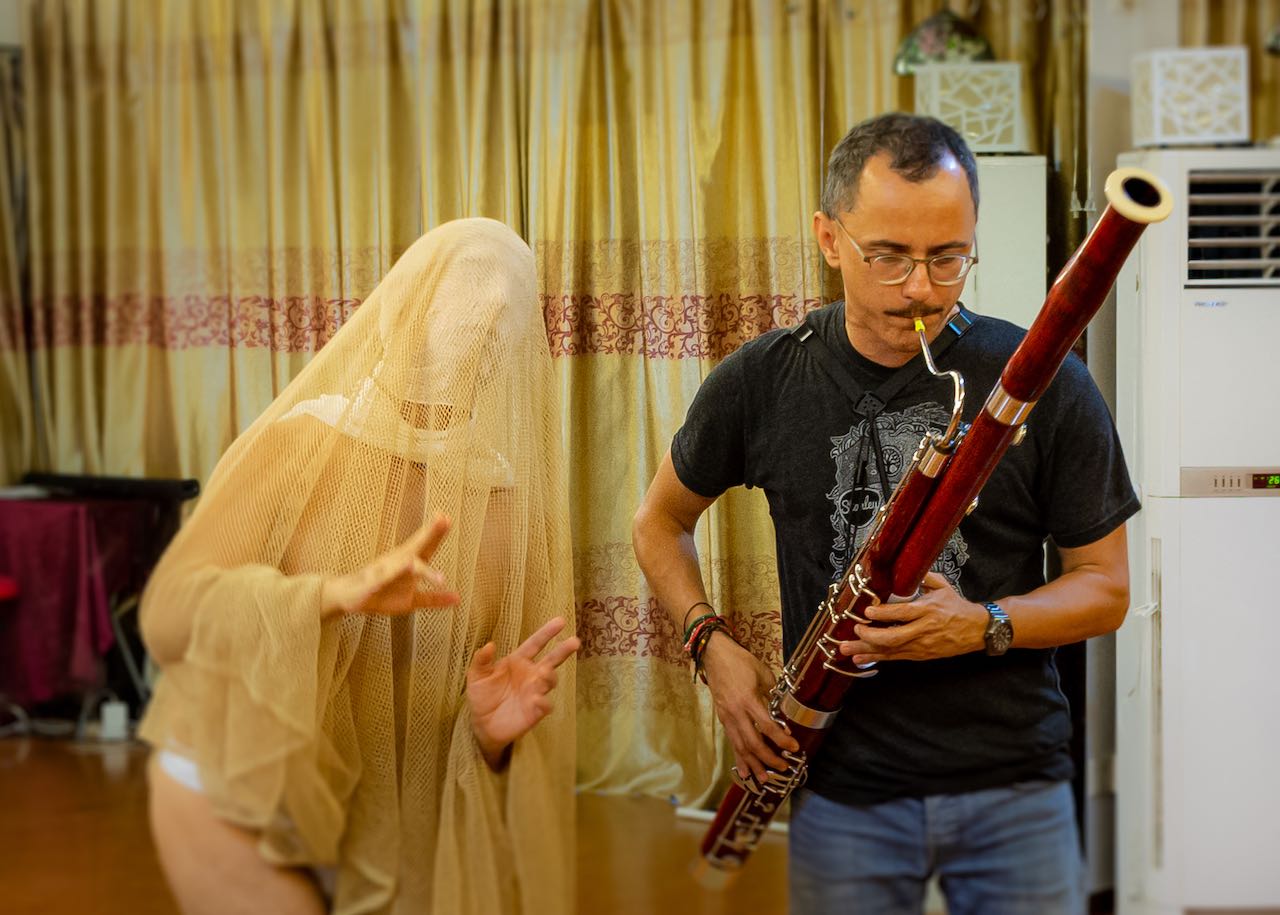

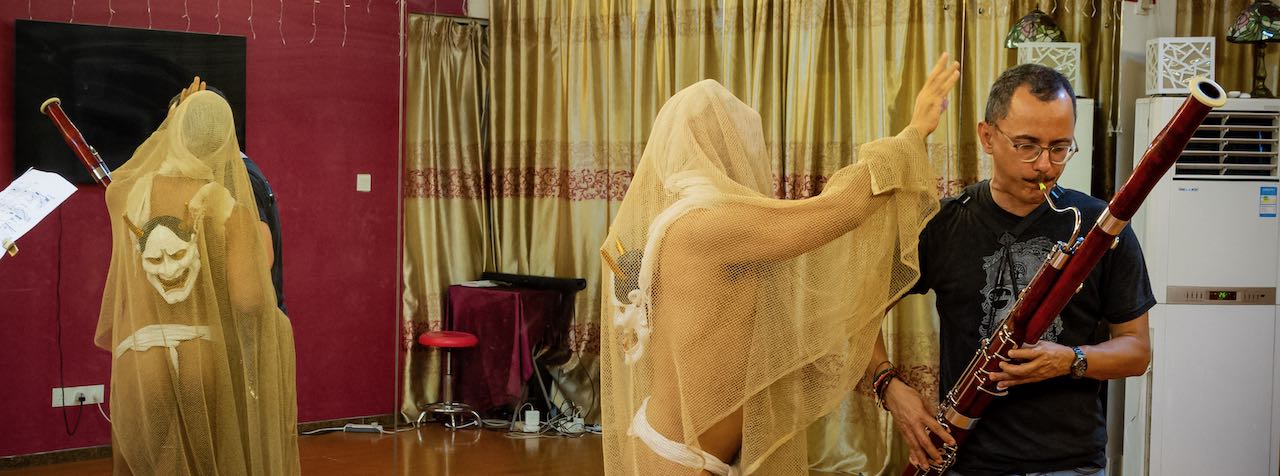




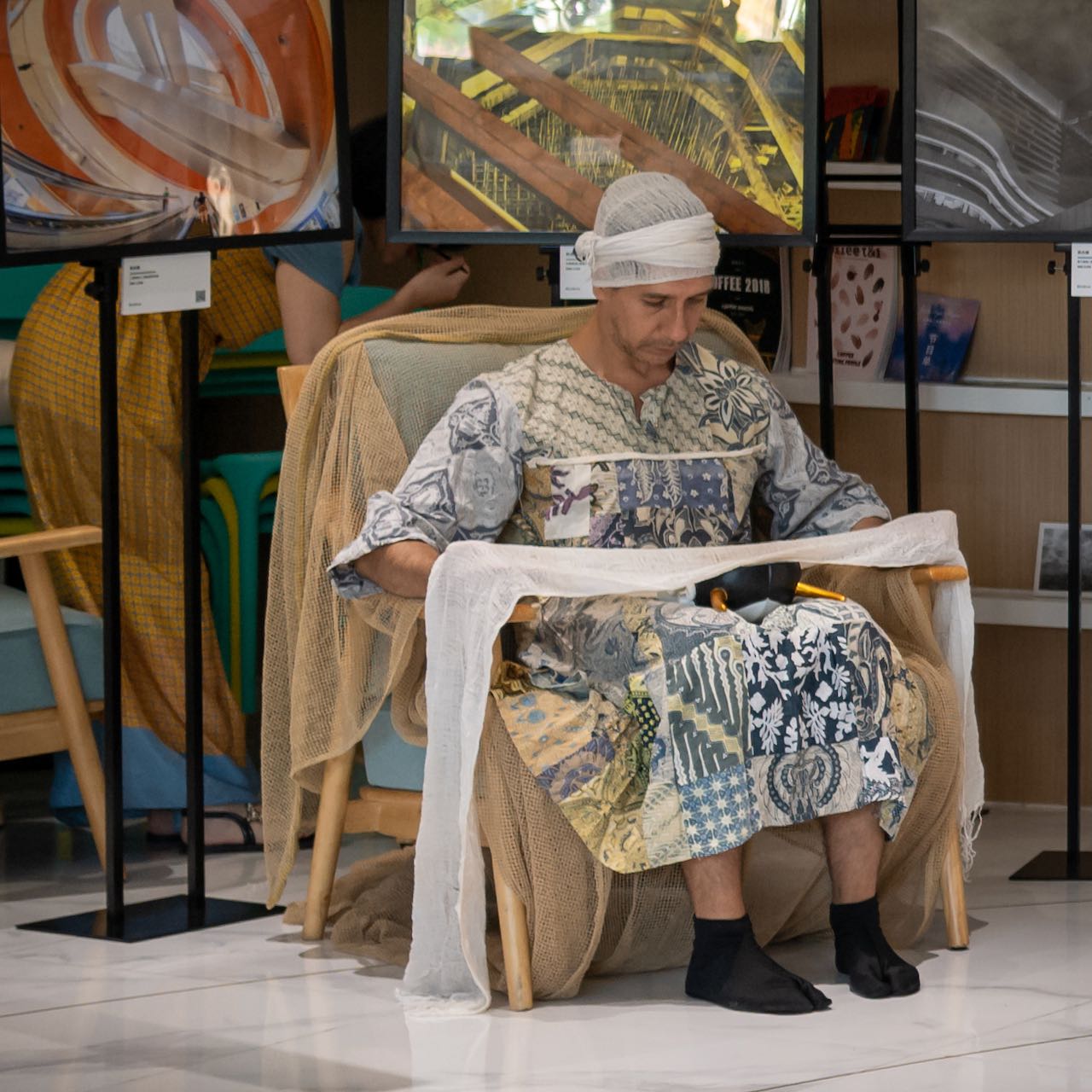



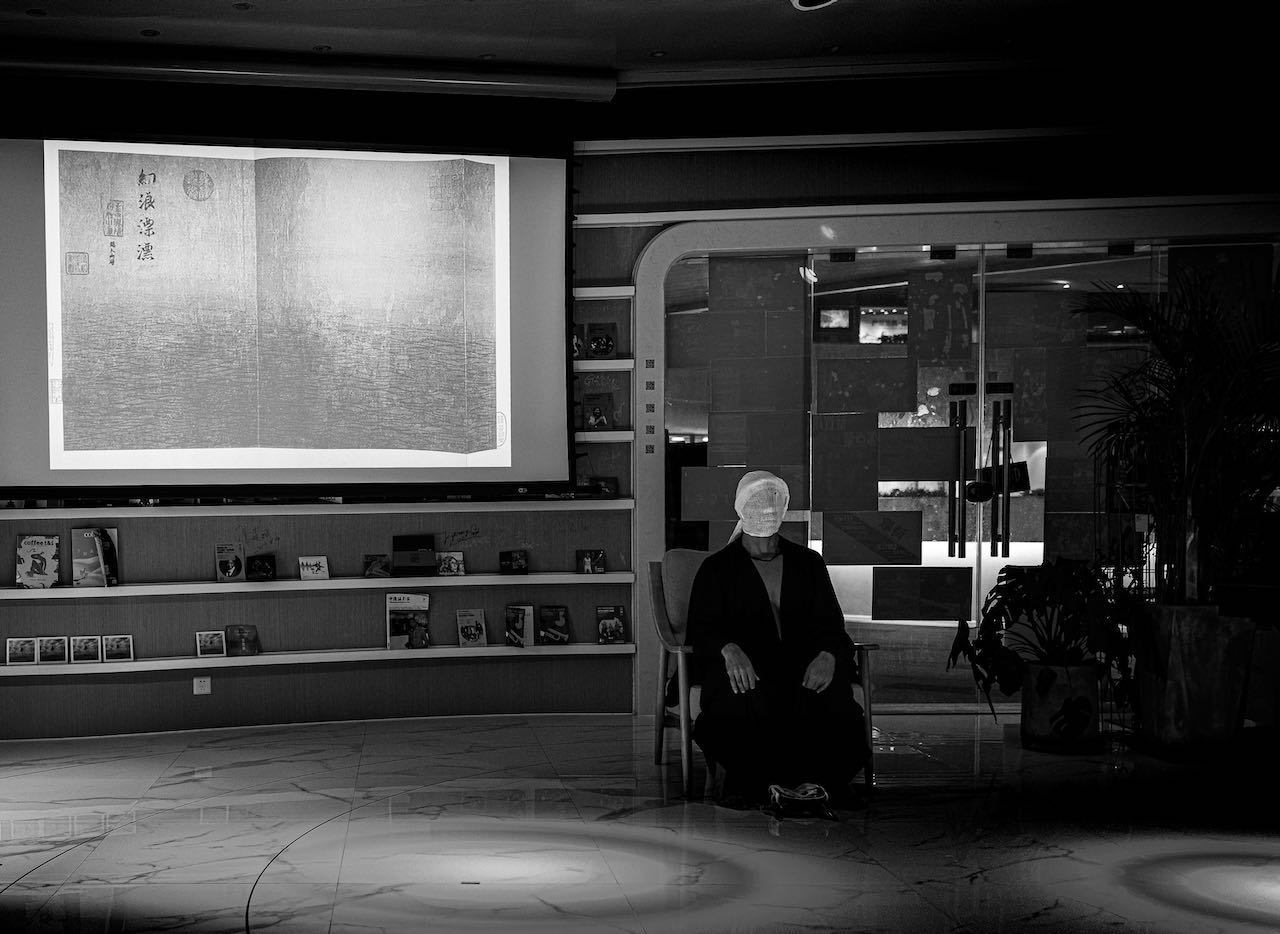
October
“Study of the Properties of Water and the Passing of Time” was performed at Zhile Art Space in Ersha Island, Guangzhou. Our 50 minute-long bassoon and Butoh performance was done before a full house and with what I can say great success. The attention and response of the public was deep and emotional, and the Q&A session afterwards passionate. I totally loved the experience.
The photographs were taken by several of the spectators present.








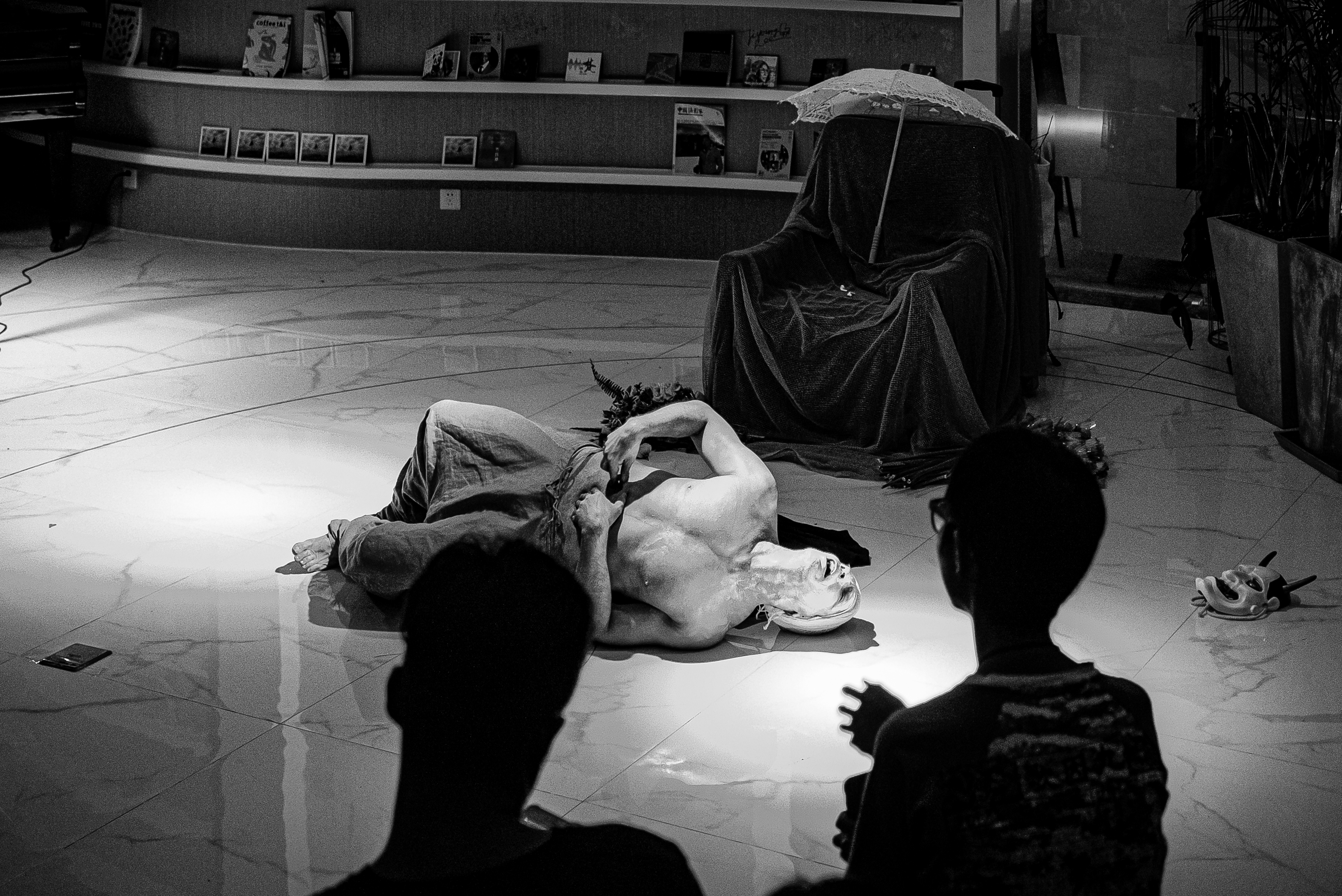



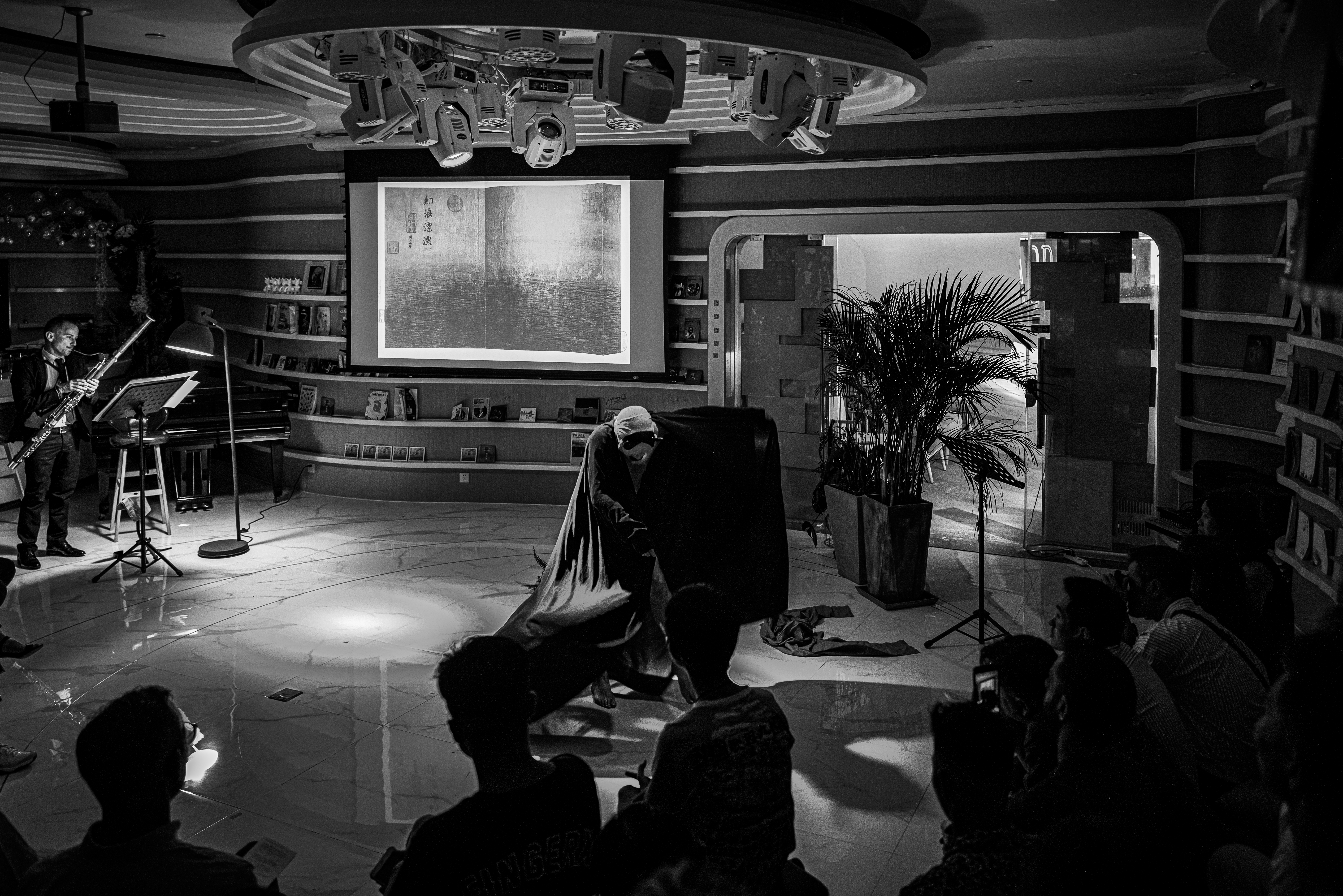




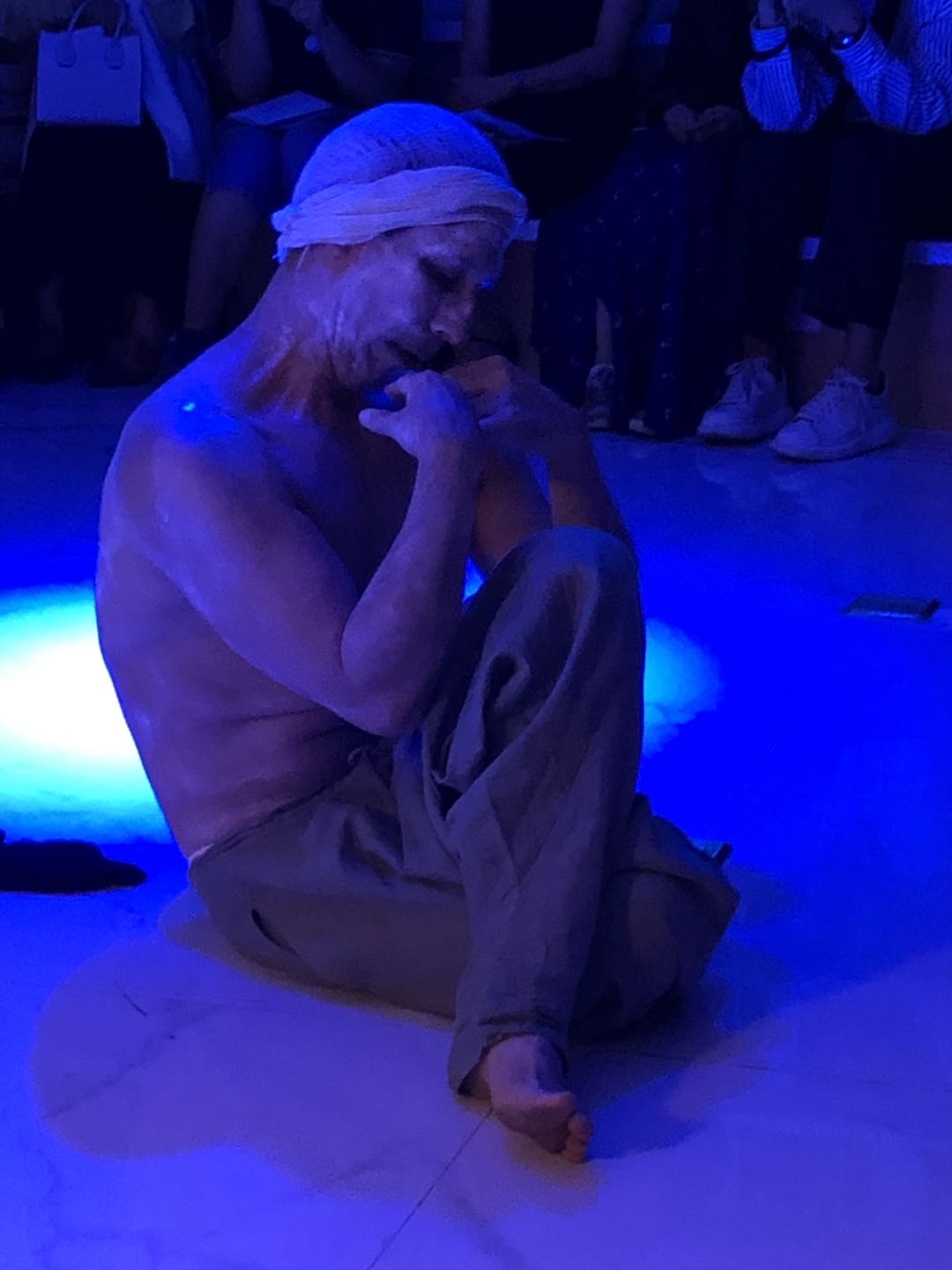
November
At long last! “Languid Bodies”, my Butoh and Video piece created in Mexico City in 2014 together with video artist Omar Ramírez. With one failed attempt in 2018 (when the show was cancelled by the police an hour before the performance due to a misperception of its content), in November 2019 I presented it at the Mexican Consulate as part of the commemoration of the International Day for the Elimination Violence against Women. Undoubtedly, no context would have been more ideal for this kind of piece.
The events hall of the Mexican Consulate is not a theatre in a proper sense, but I managed to transform it into a very basic stage, with some unavoidable visibility problems. The public was a mix of foreigners and Chinese. It made me happy that the video created by Omar, even though projected in a small format, made a very strong impression in the public and was well appreciated and even put at the same level of relevance as the Butoh piece itself. I’m personally very fond of this work and I felt more than blessed by the response to it here in China.















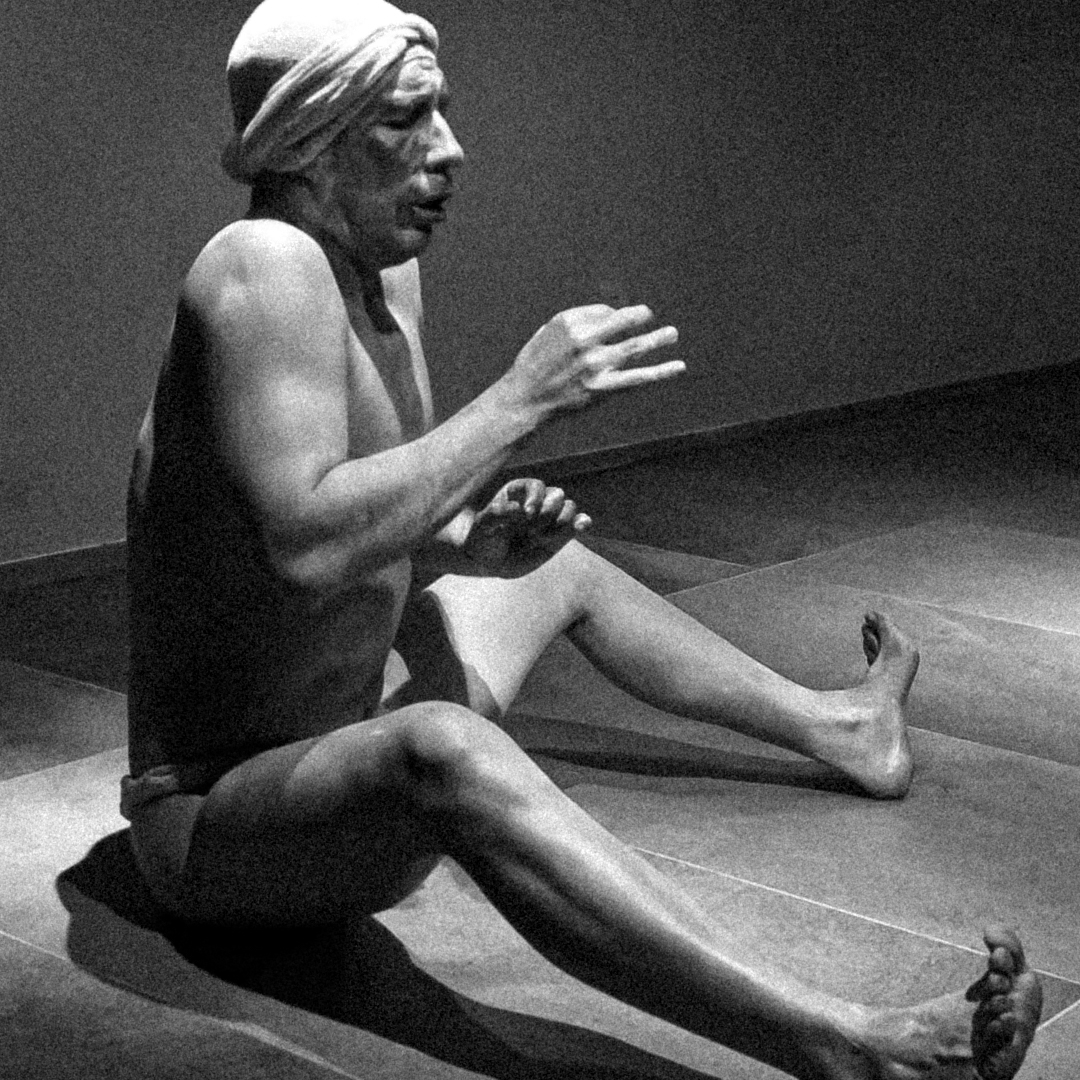
December
After an invitation by Jasmine, the manager at Zhile Art Space, to participate at the Guangzhou Outdoor Arts Festival (lucky me!), I created “Masks”, a 50-minute Butoh and physical theatre performance. The GOA Festival 2019 attracted hundreds of spectators every day during all December, and the day of my presentation was no exception. I was afraid to face the monster, but that was no monster, it was a beautiful creature, attentive and open to be touched.
The night after the performance I wrote:
“Deeply satisfied with Masks’ presentation yesterday night at the GOA festival in Guangzhou. A very special outdoor setting, I would say spectacular. A huge audience (something like 400 people), attentive and with great response to my work. It was broadcast online throughout China on two different channels and, from what I know about just one of those channels, more than 4000 people were watching the performance.“
Also, there was even a Korean artist among the public that drew what she saw during the performance.
I’m so grateful to Jasmine, my favourite Chinese producer, and to AG, the director of the GOA Festival, who believed in my work. I feel I’m a very lucky person.“
And the festival article reviewing the performance was very kind to me:
“来自墨西哥,目前驻地在广州的舞踏艺术家 Gustavo Thomas(古斯塔沃·托马斯)此次上演的舞踏作品《面具》,是他专门为 GOA 创作的全新作品。艺术家神秘而具有浓厚跨文化色彩的演出令在场市民目不转睛,从孩童到大人,皆为他的作品献上了热烈掌声。”
“Mexican Butoh artist Gustavo Thomas, who currently resides in Guangzhou, presented the piece “Masks”, created by him specifically for GOA. The artist’s mysterious and strong cross-cultural performance firmly held the attention of those present, from children to adults. His piece received enthusiastic applause.“
The year ahead is – as is usual in my life – unpredictable, but I’m feeling that I’m learning (and starting to use what I’ve learned) to work in a very unpredictable surrounding. I have at least three projects in the making and some collaborations with other artists.
We’ll see what happens…












